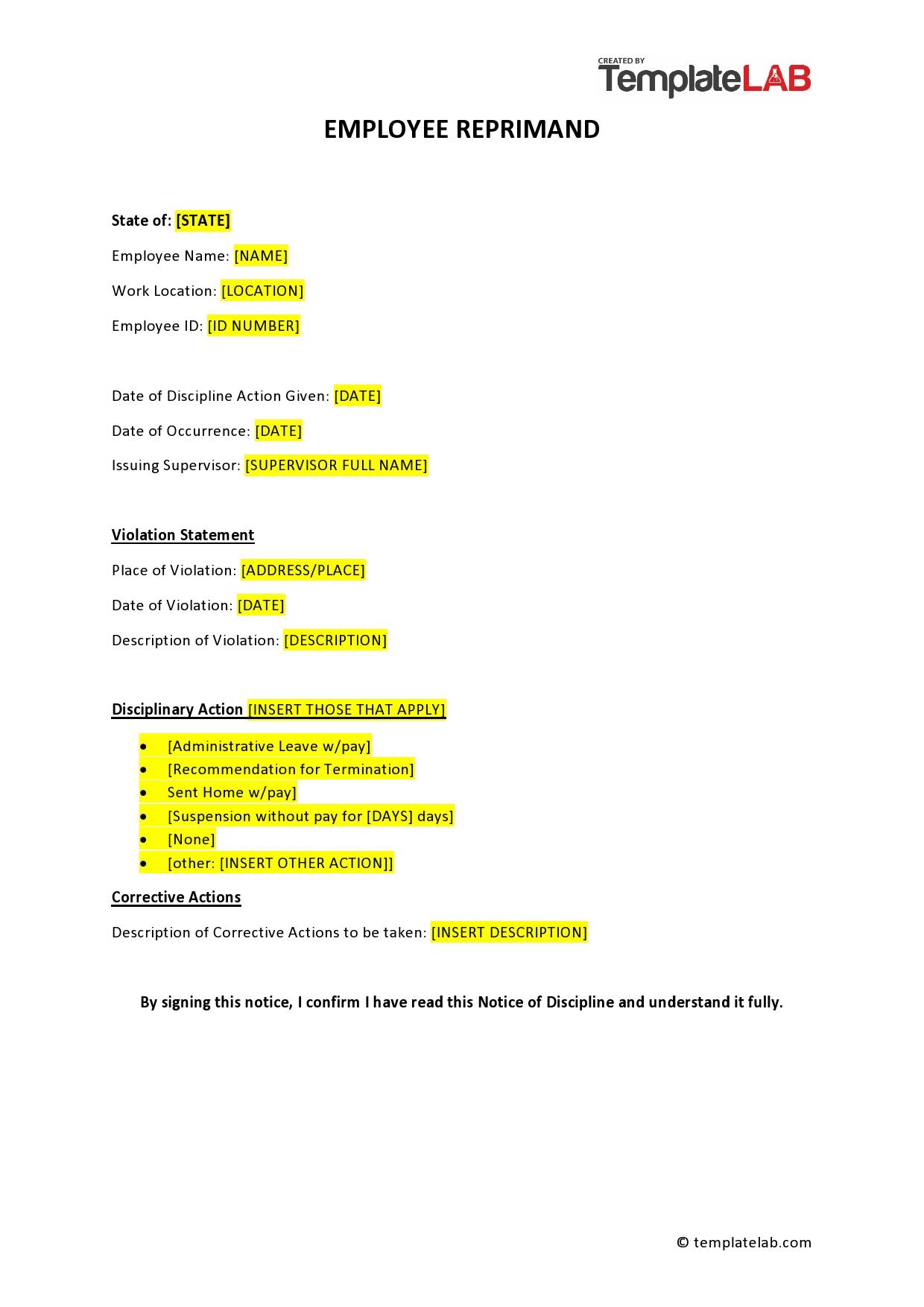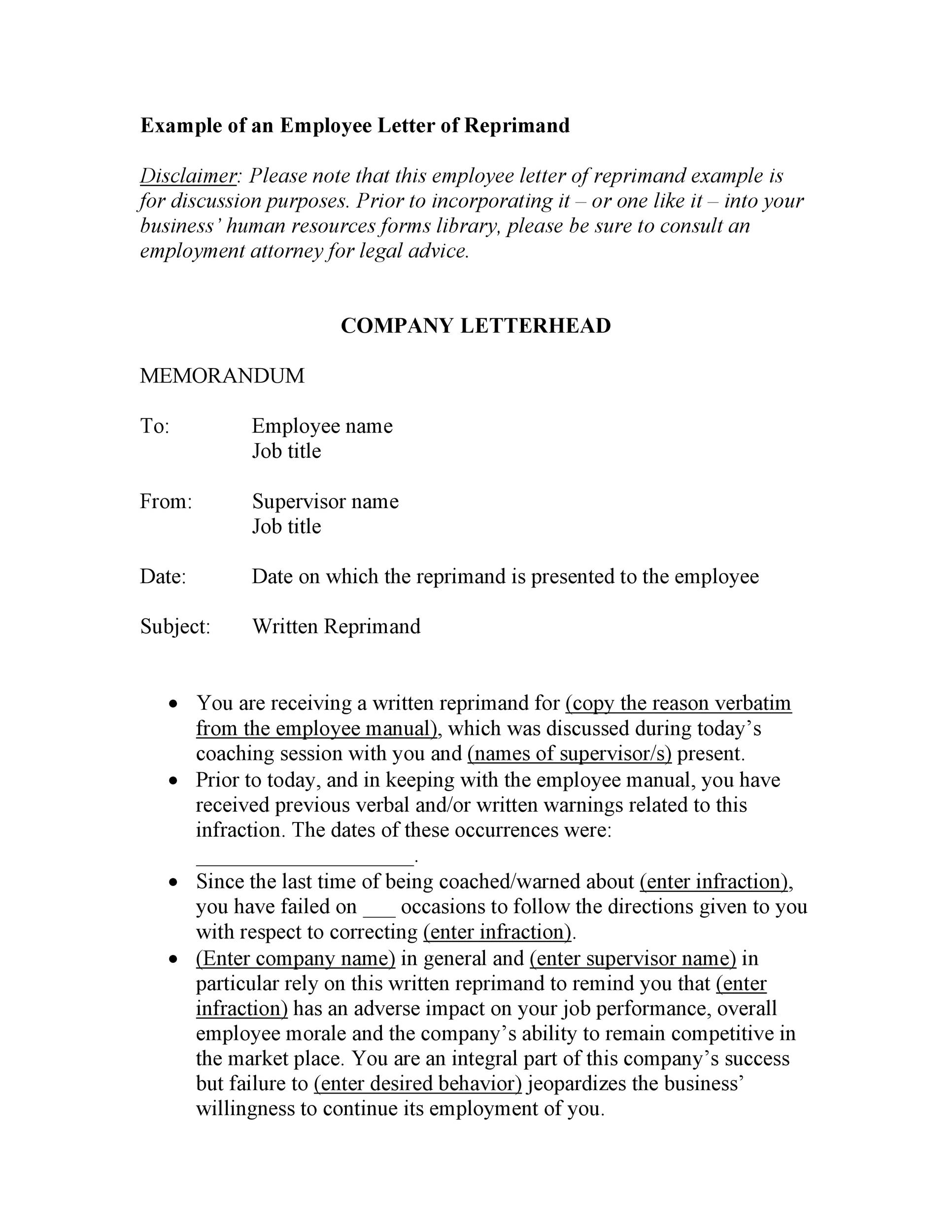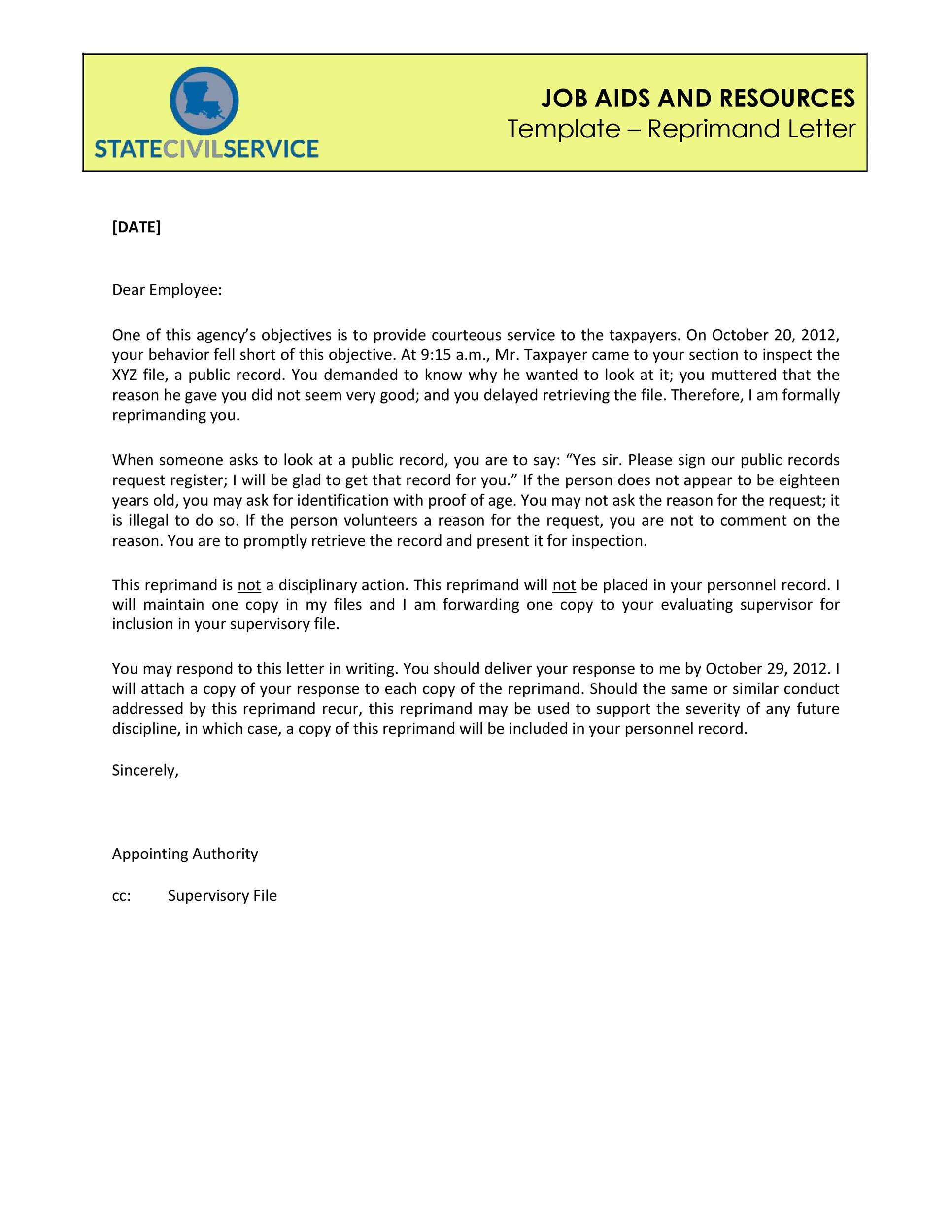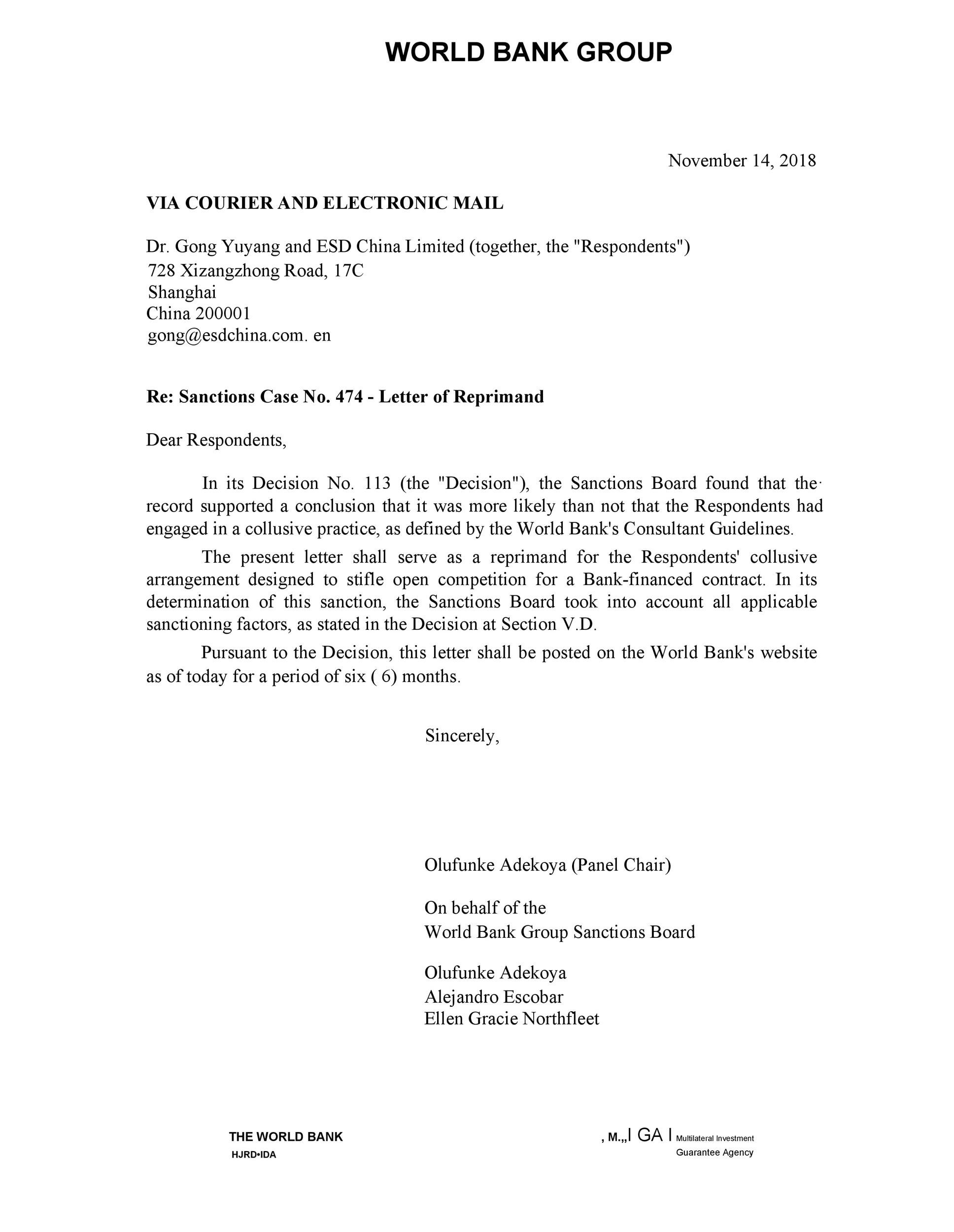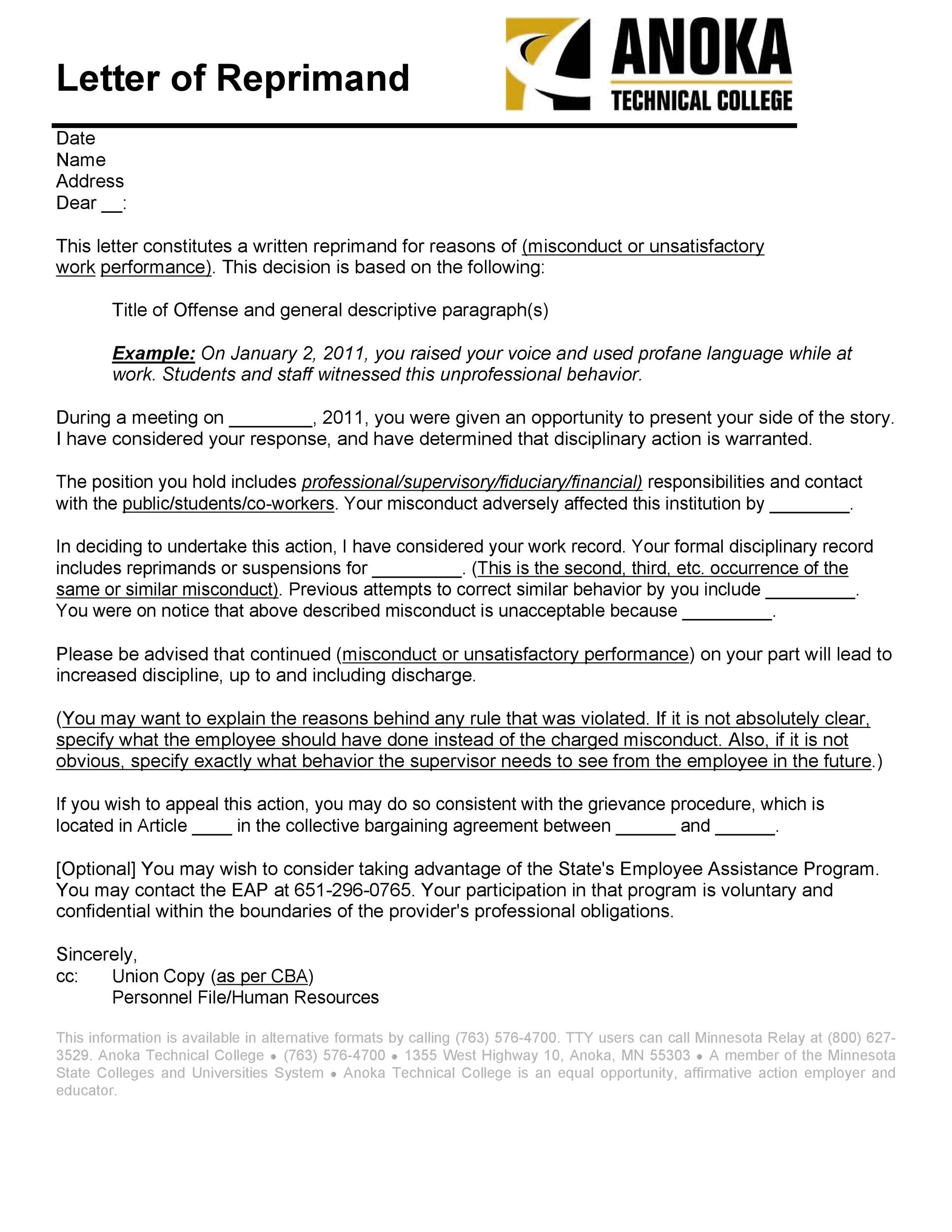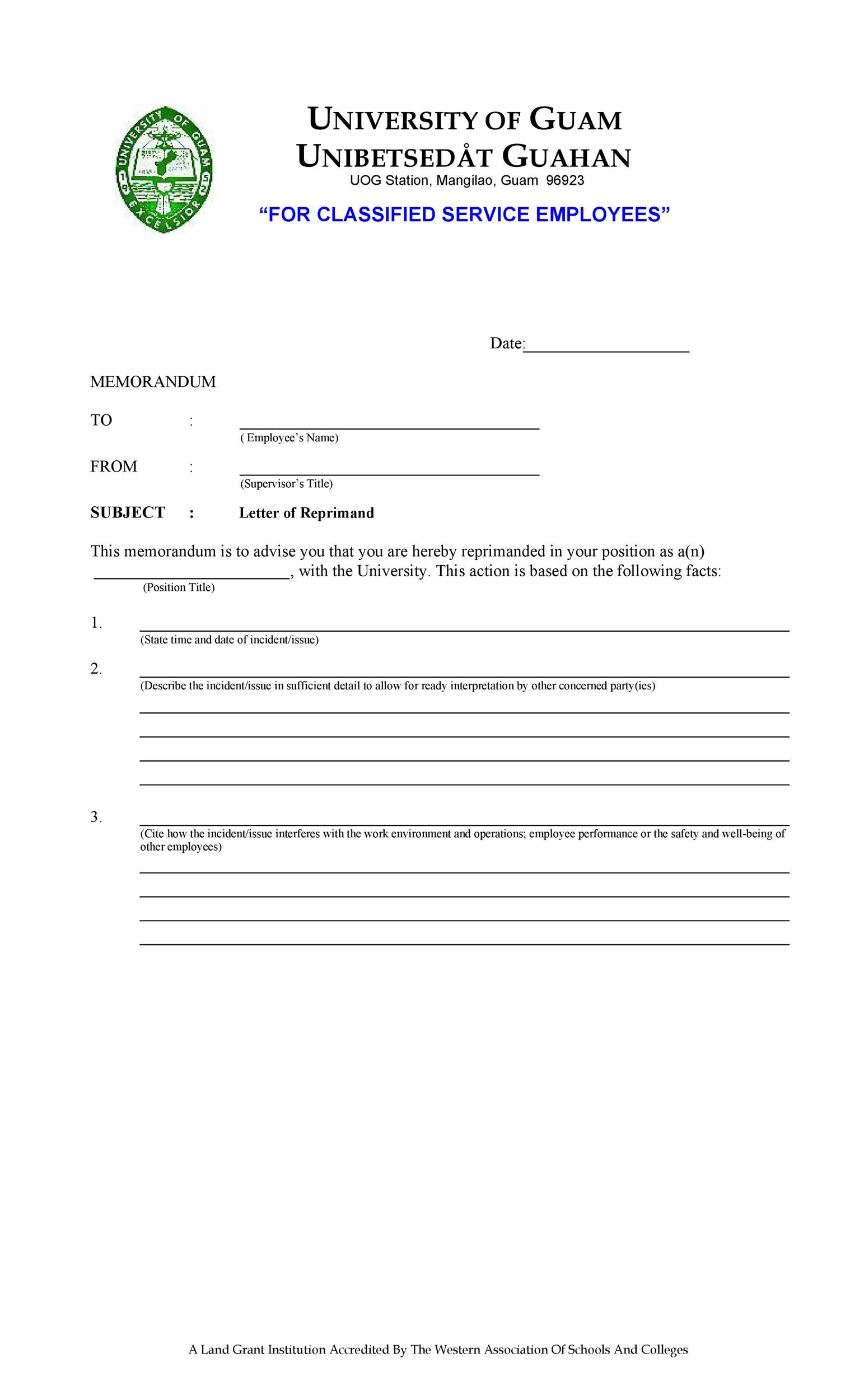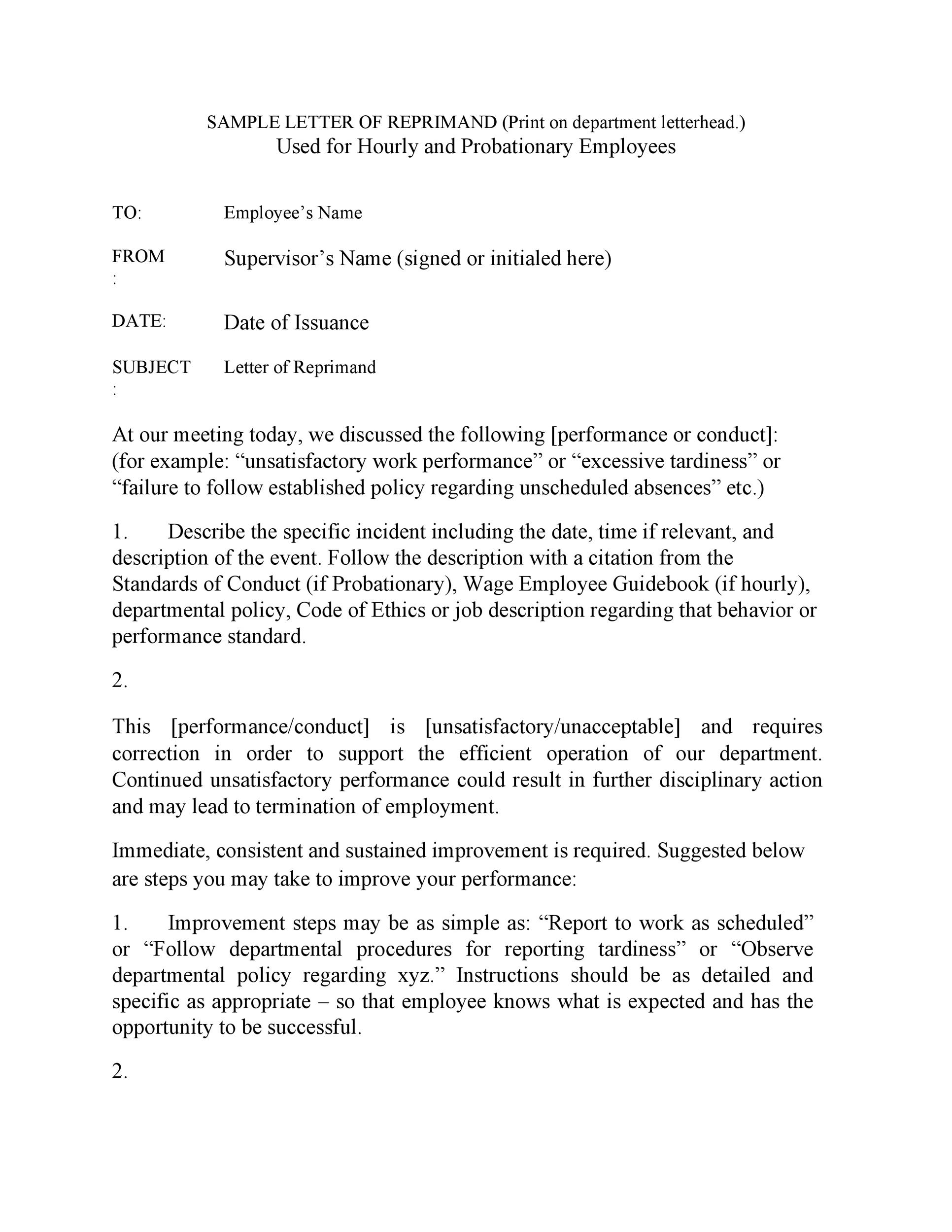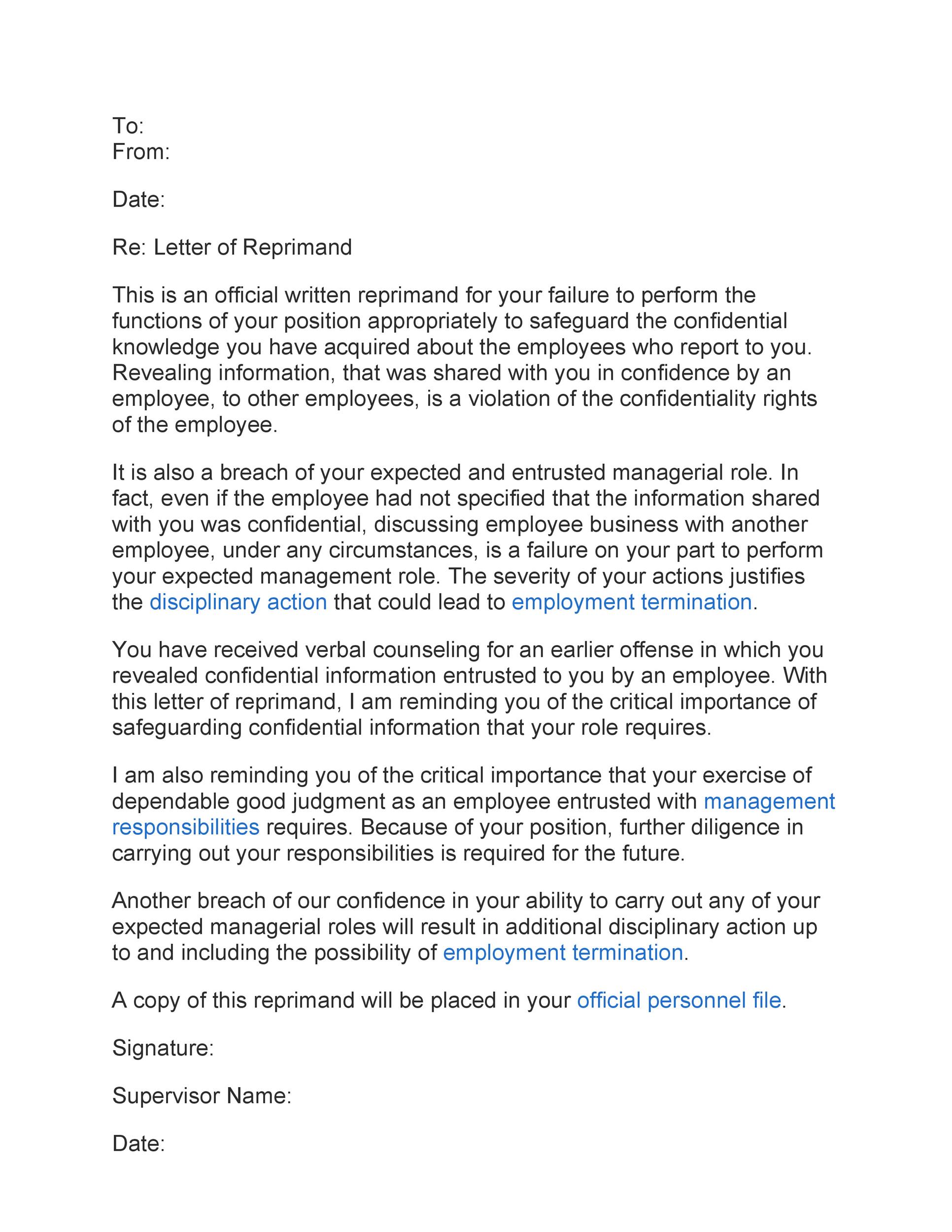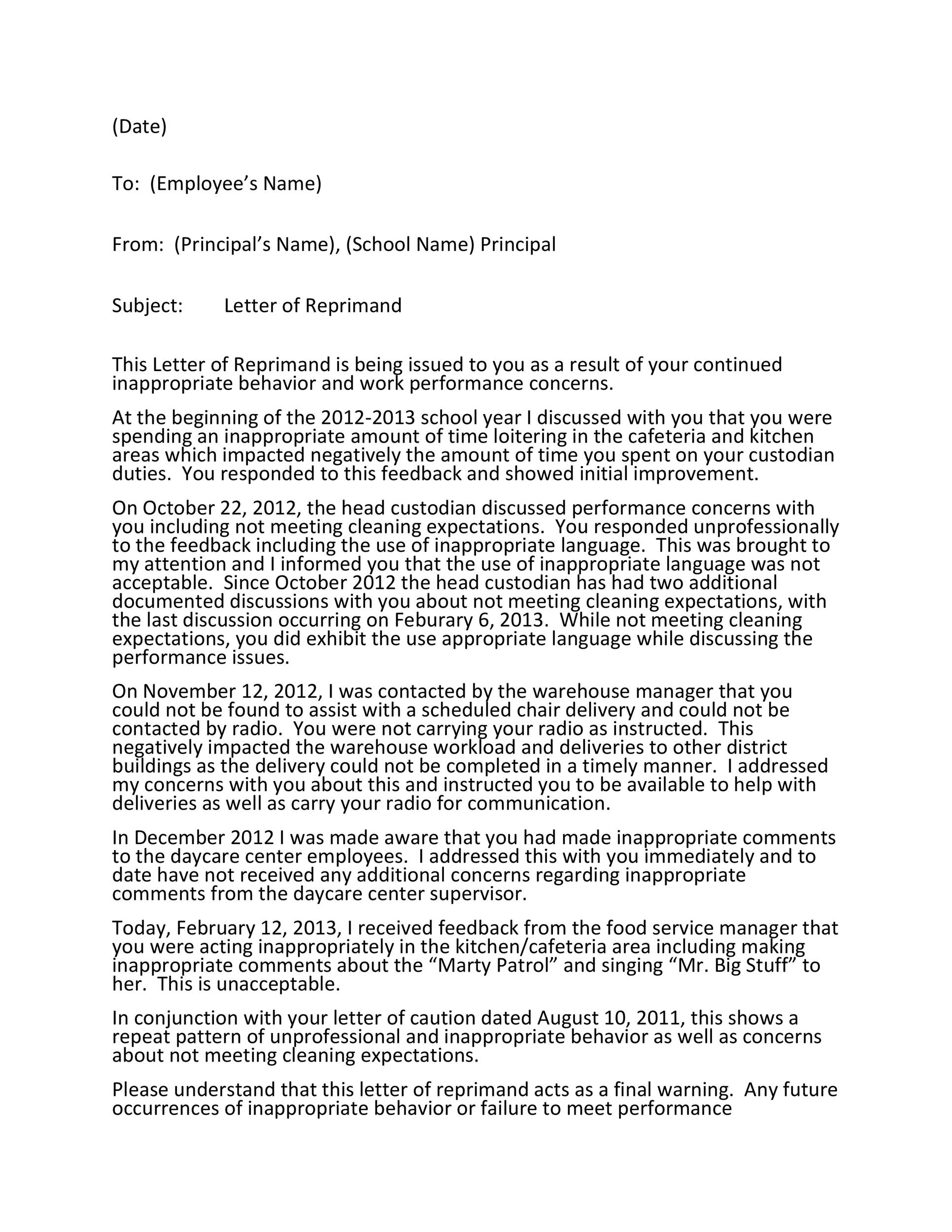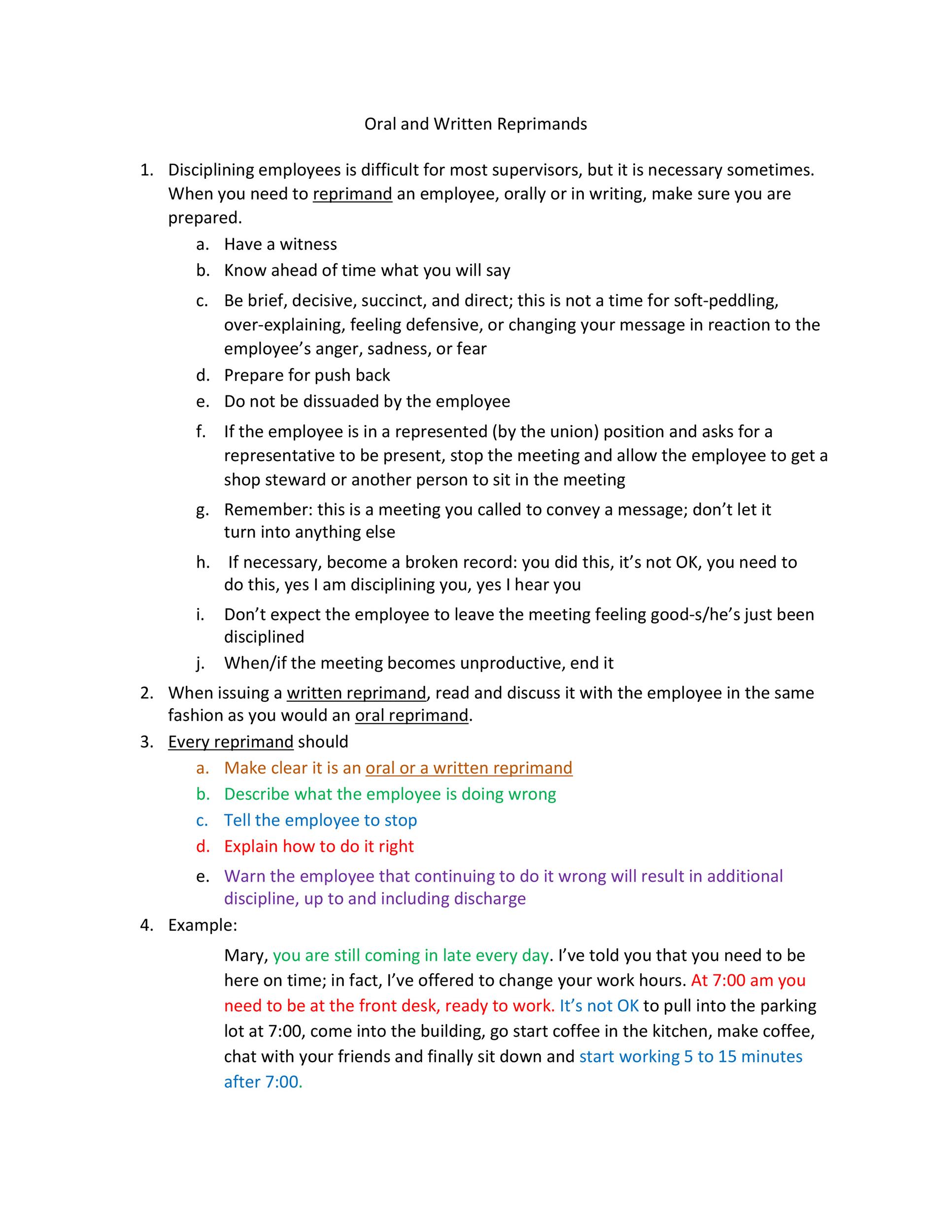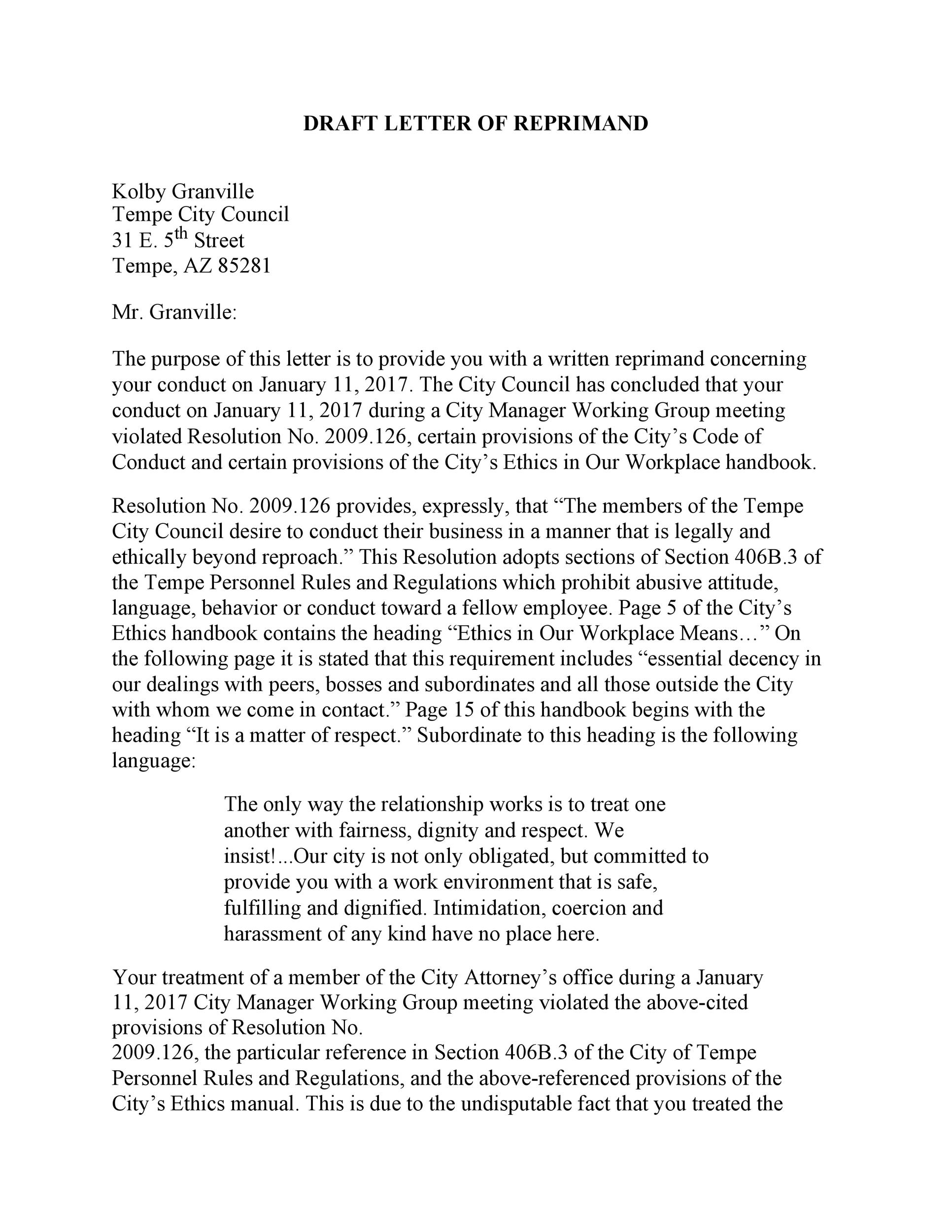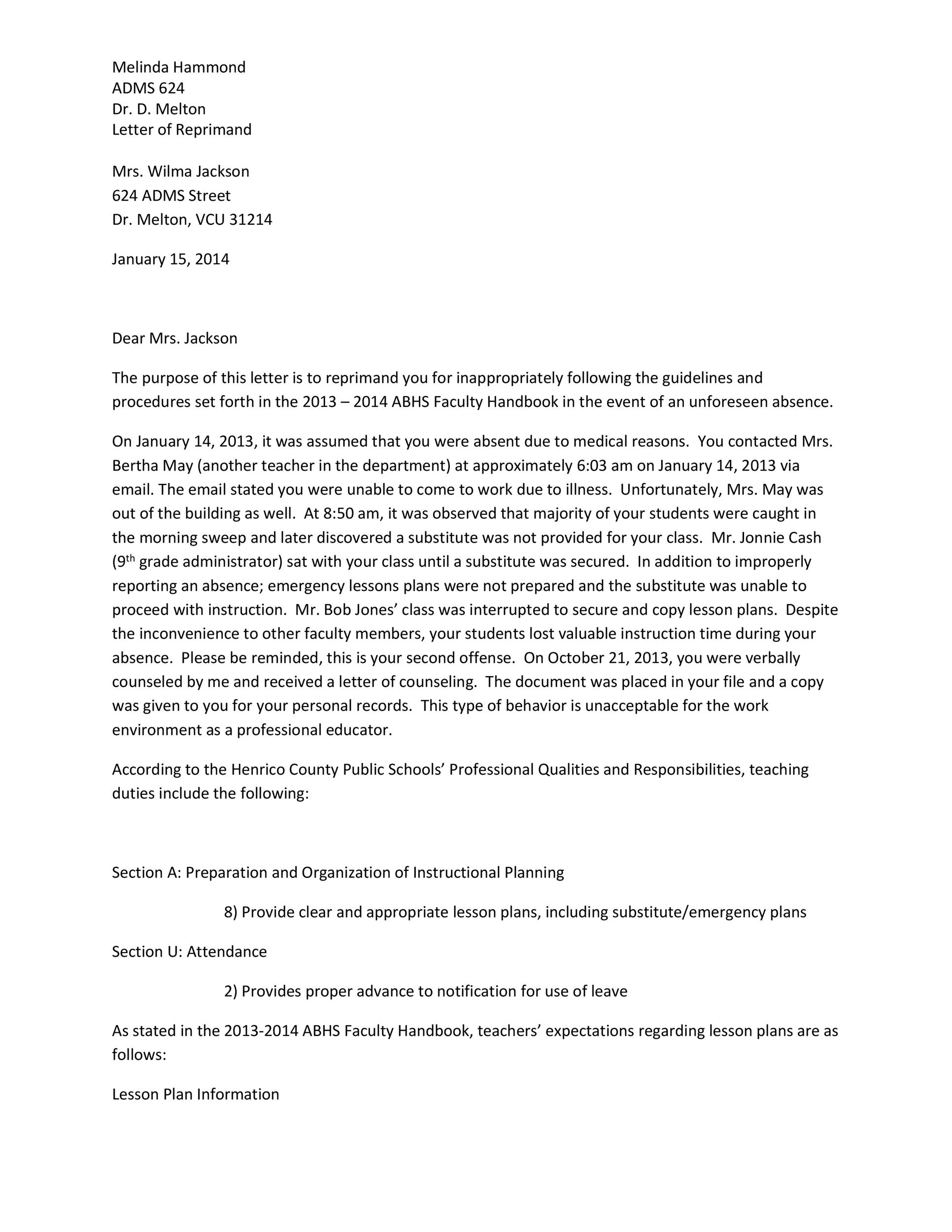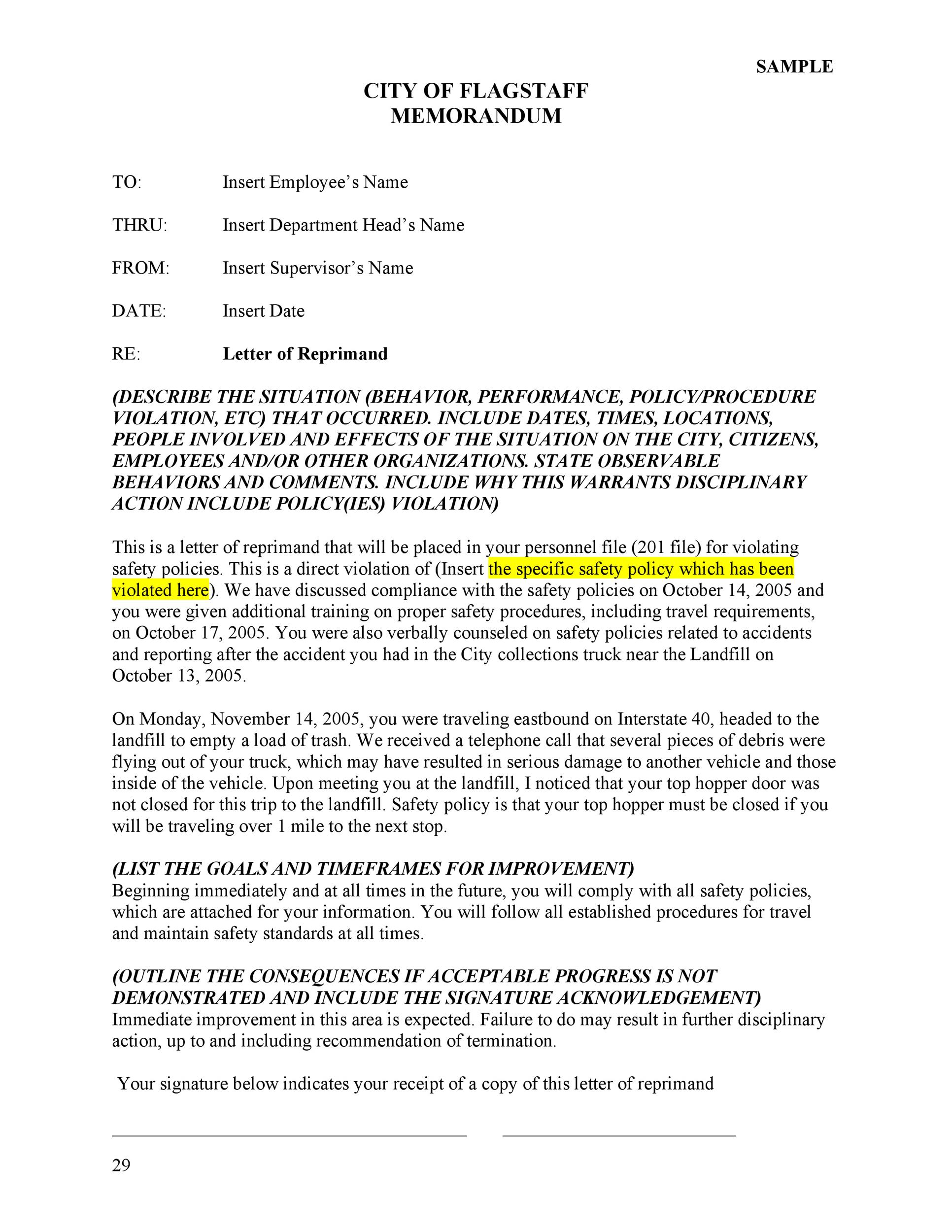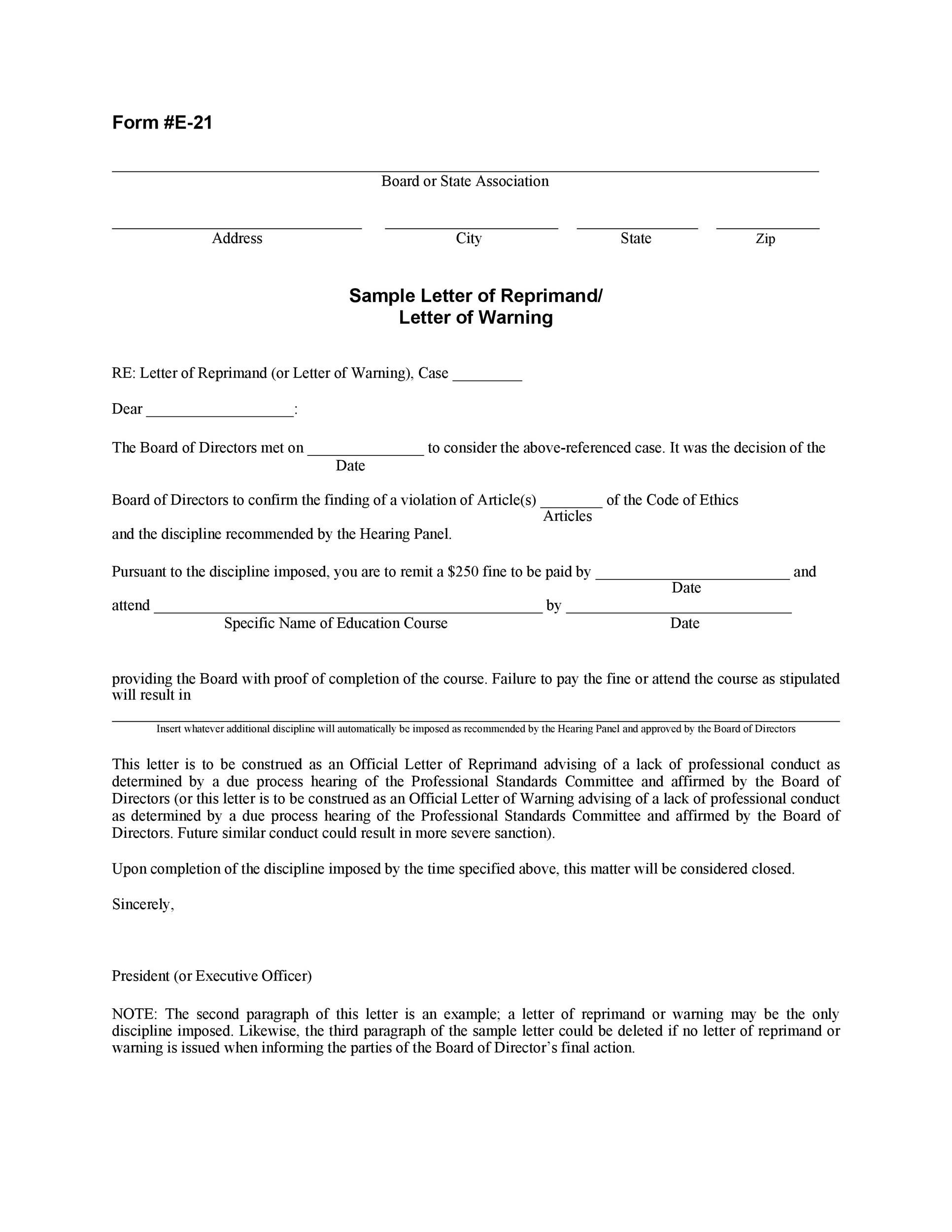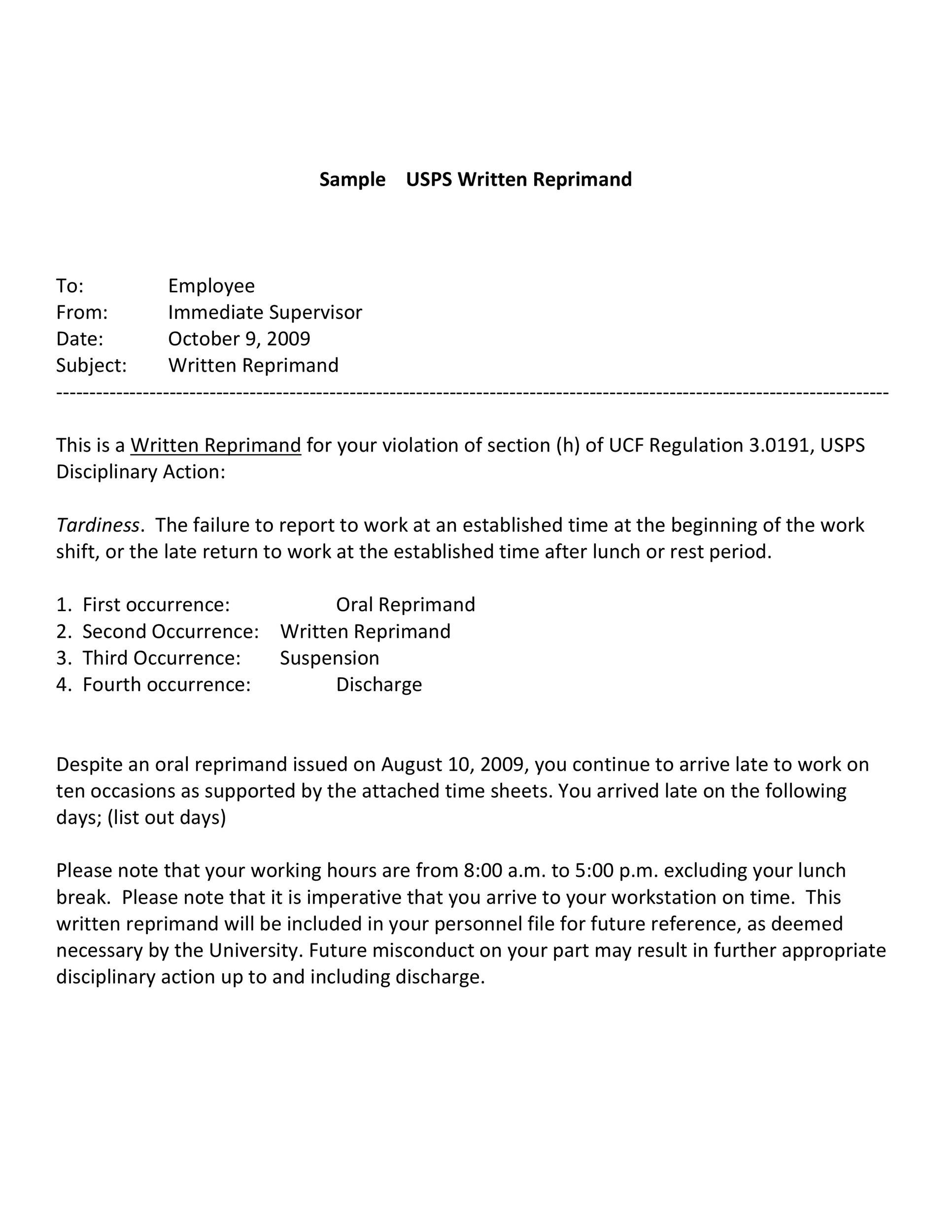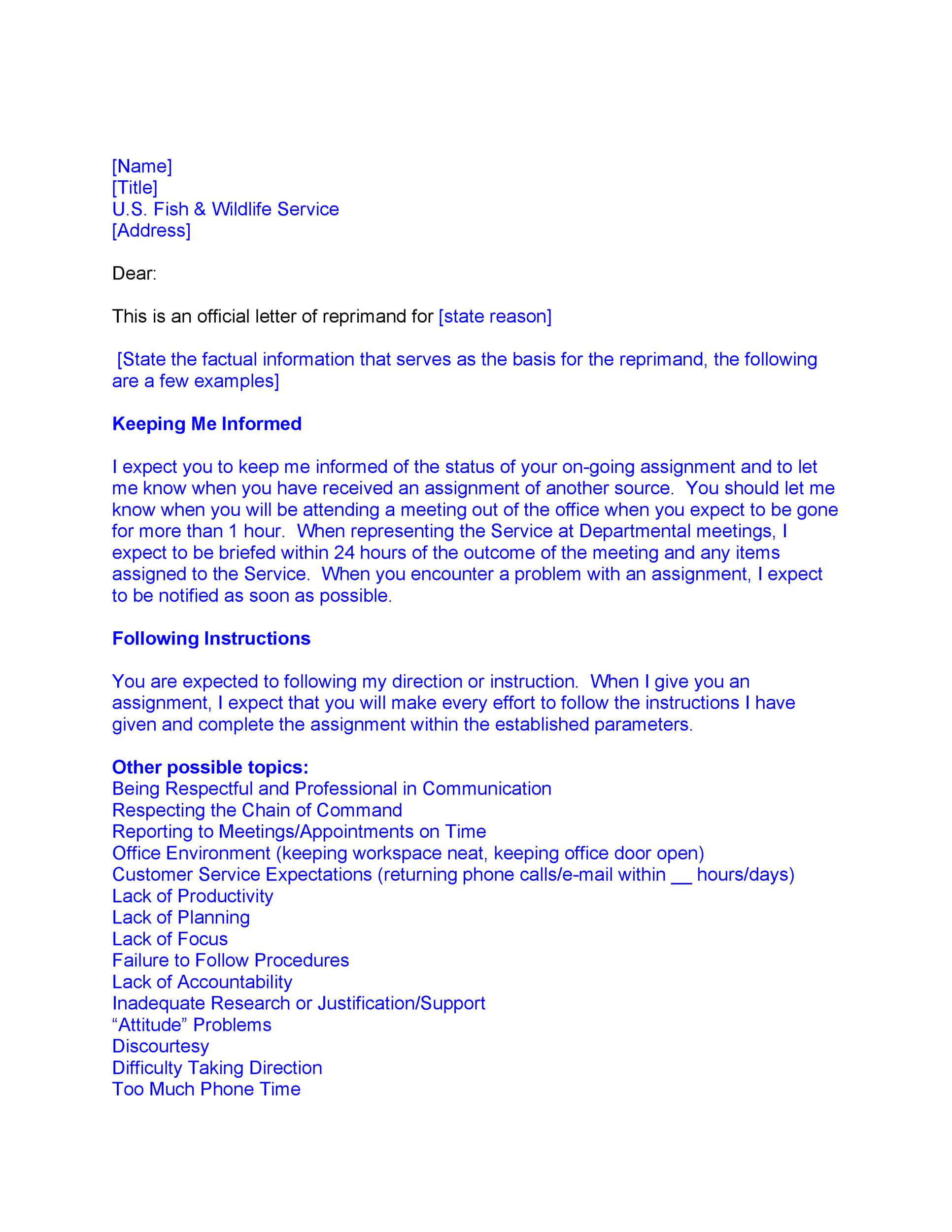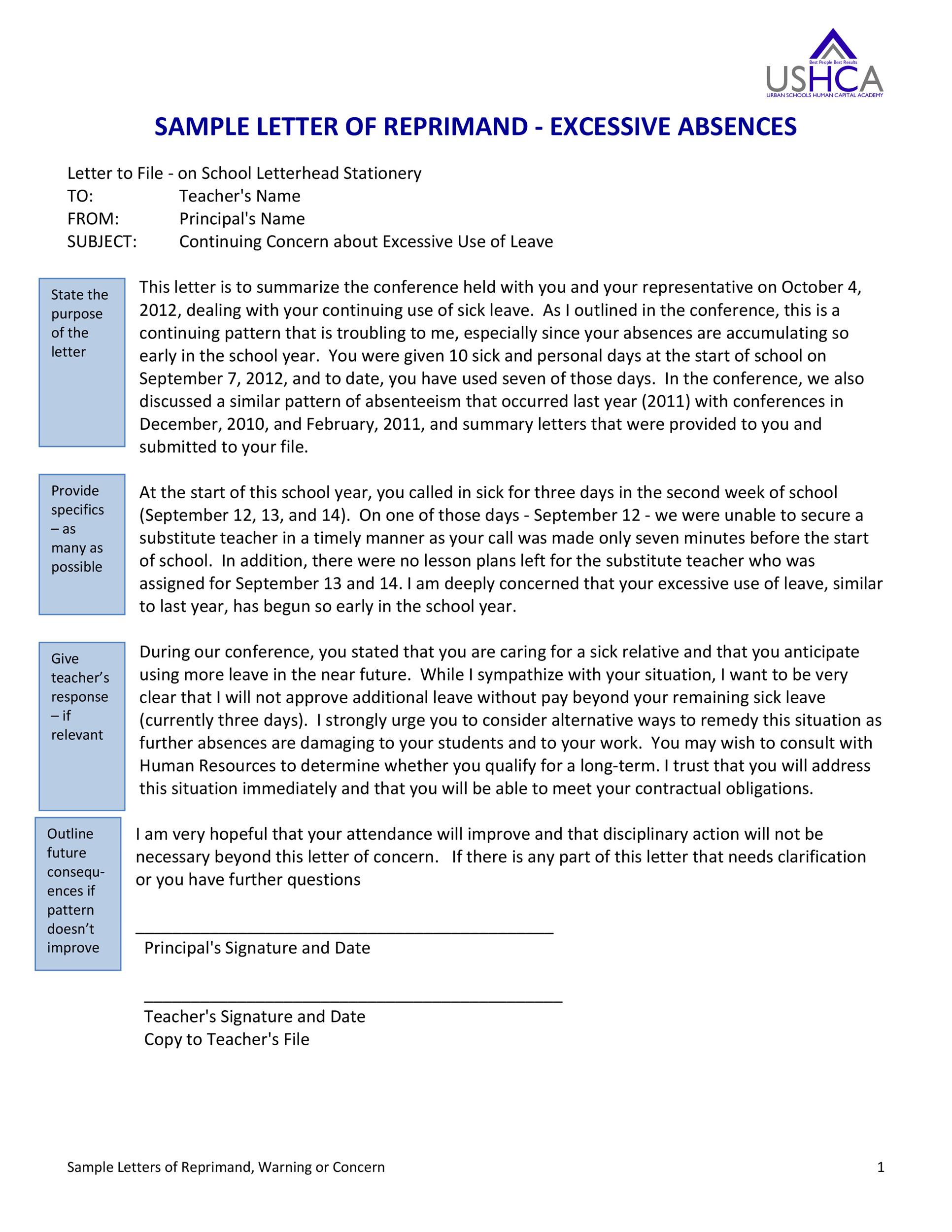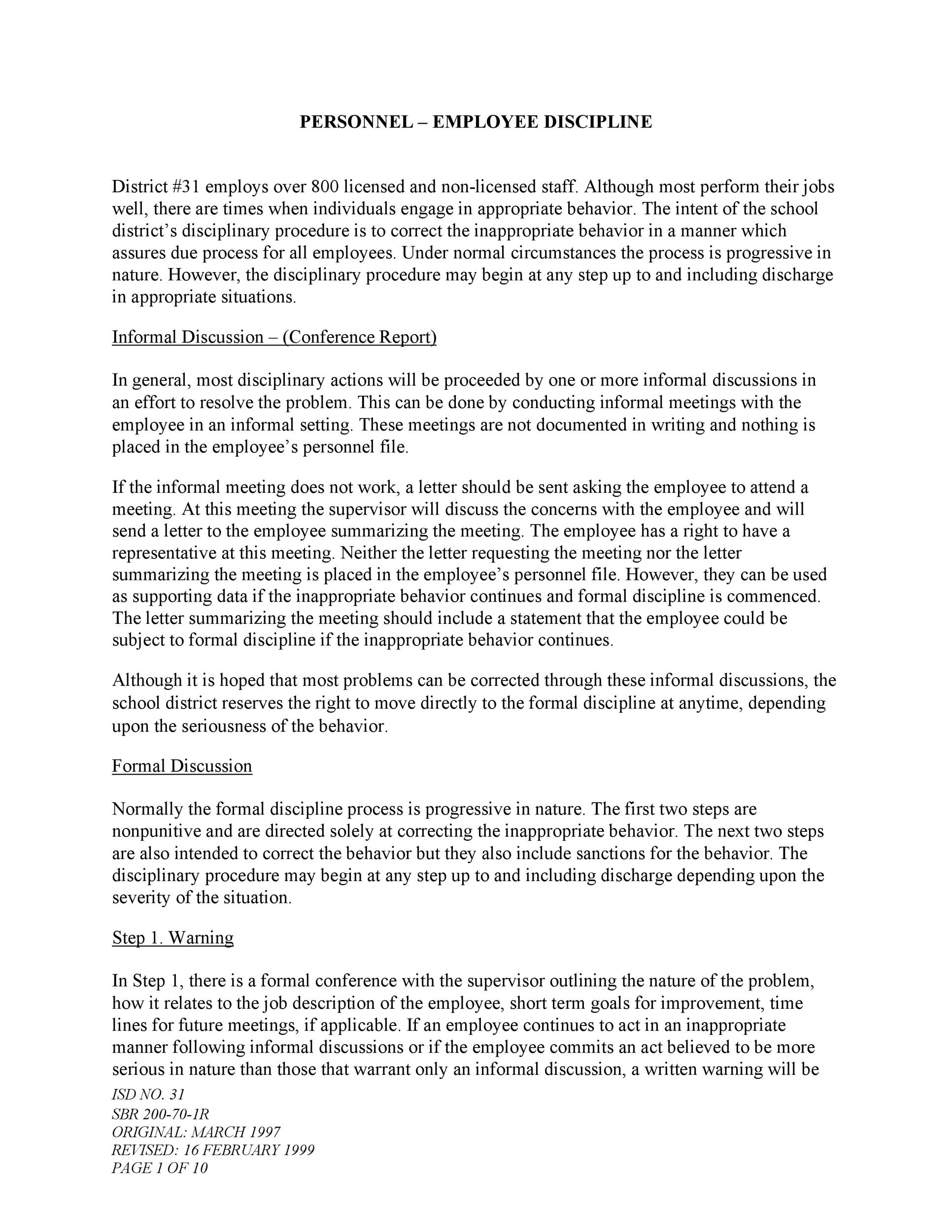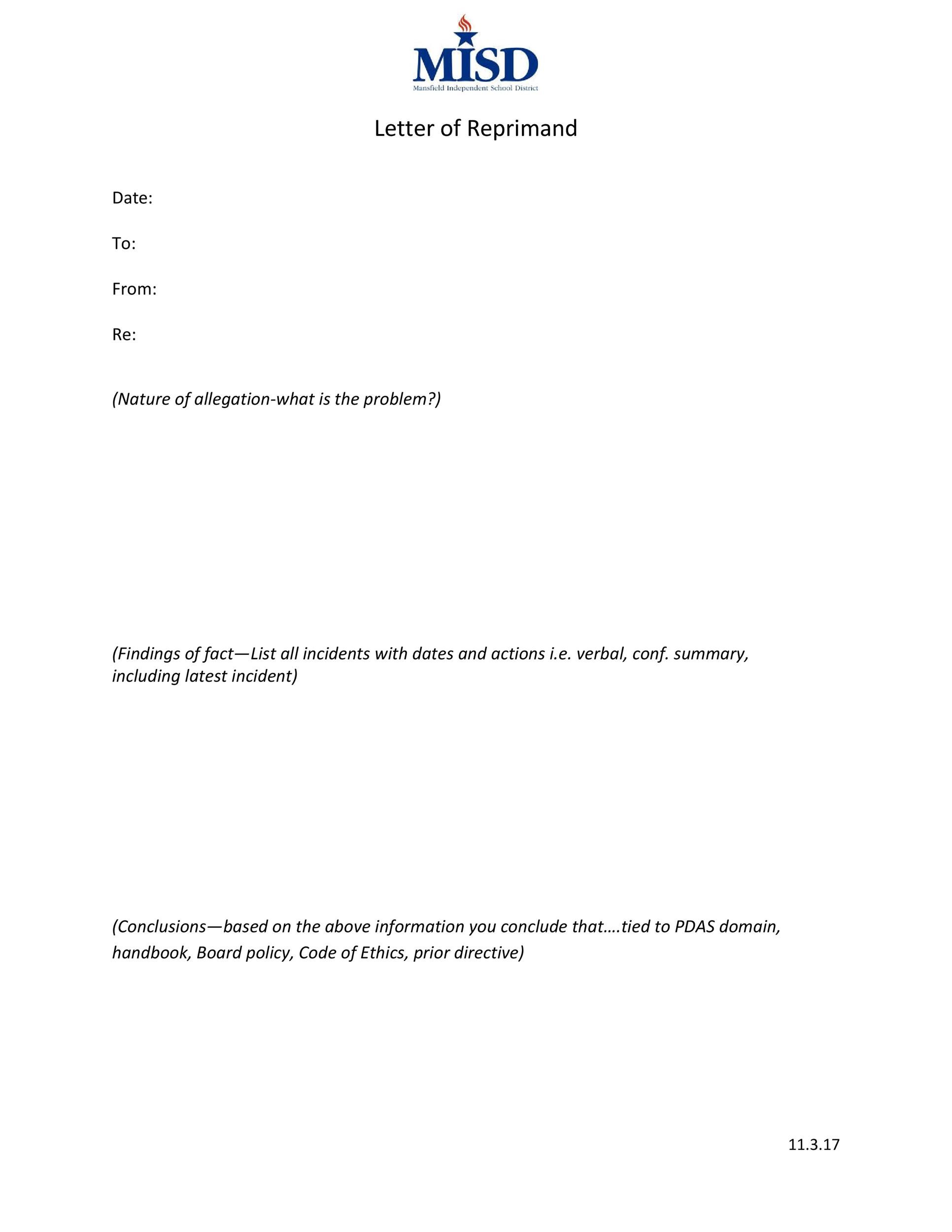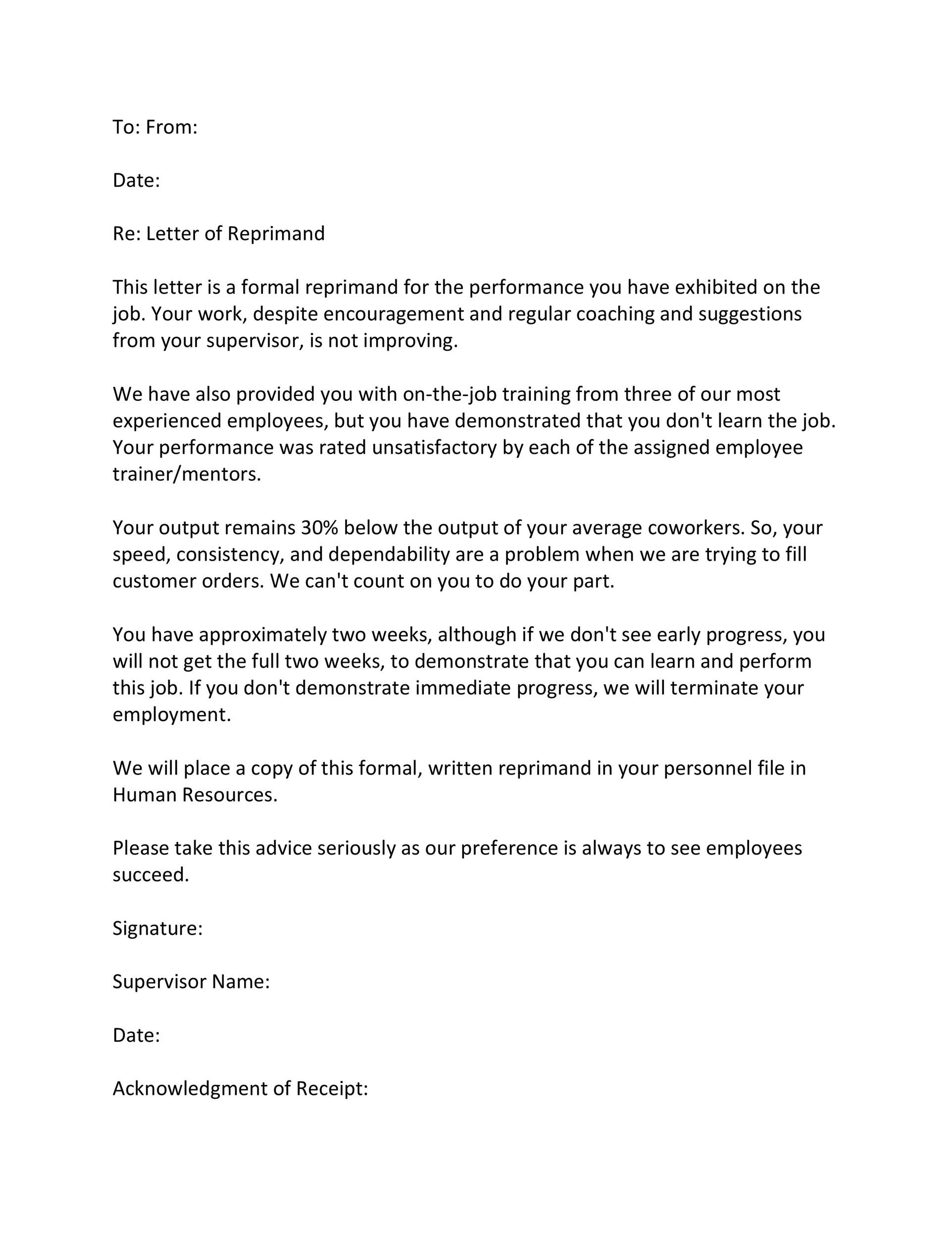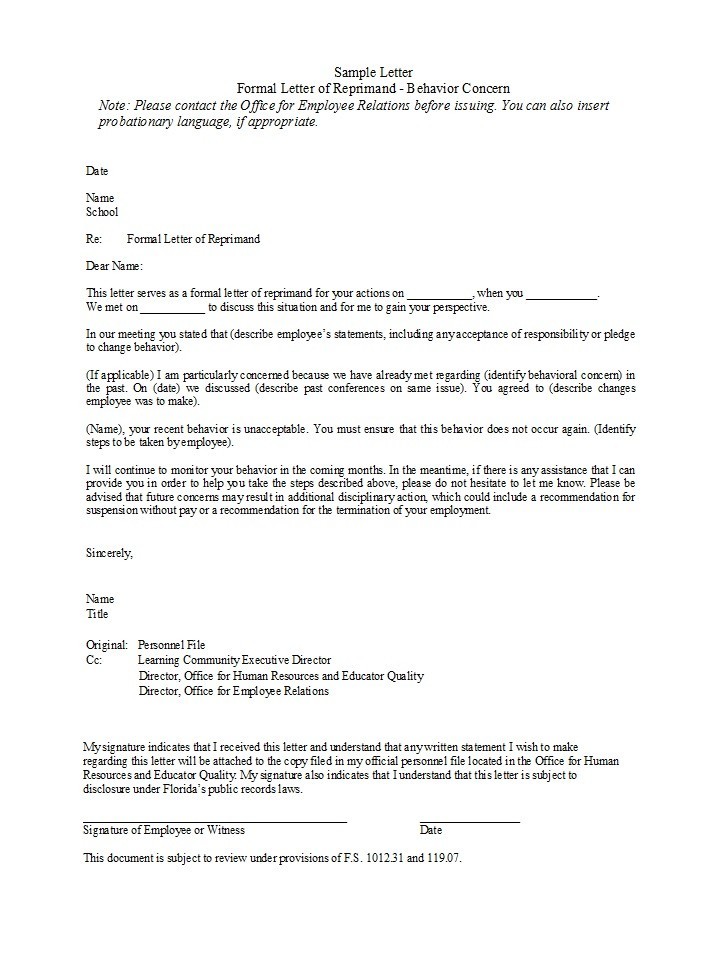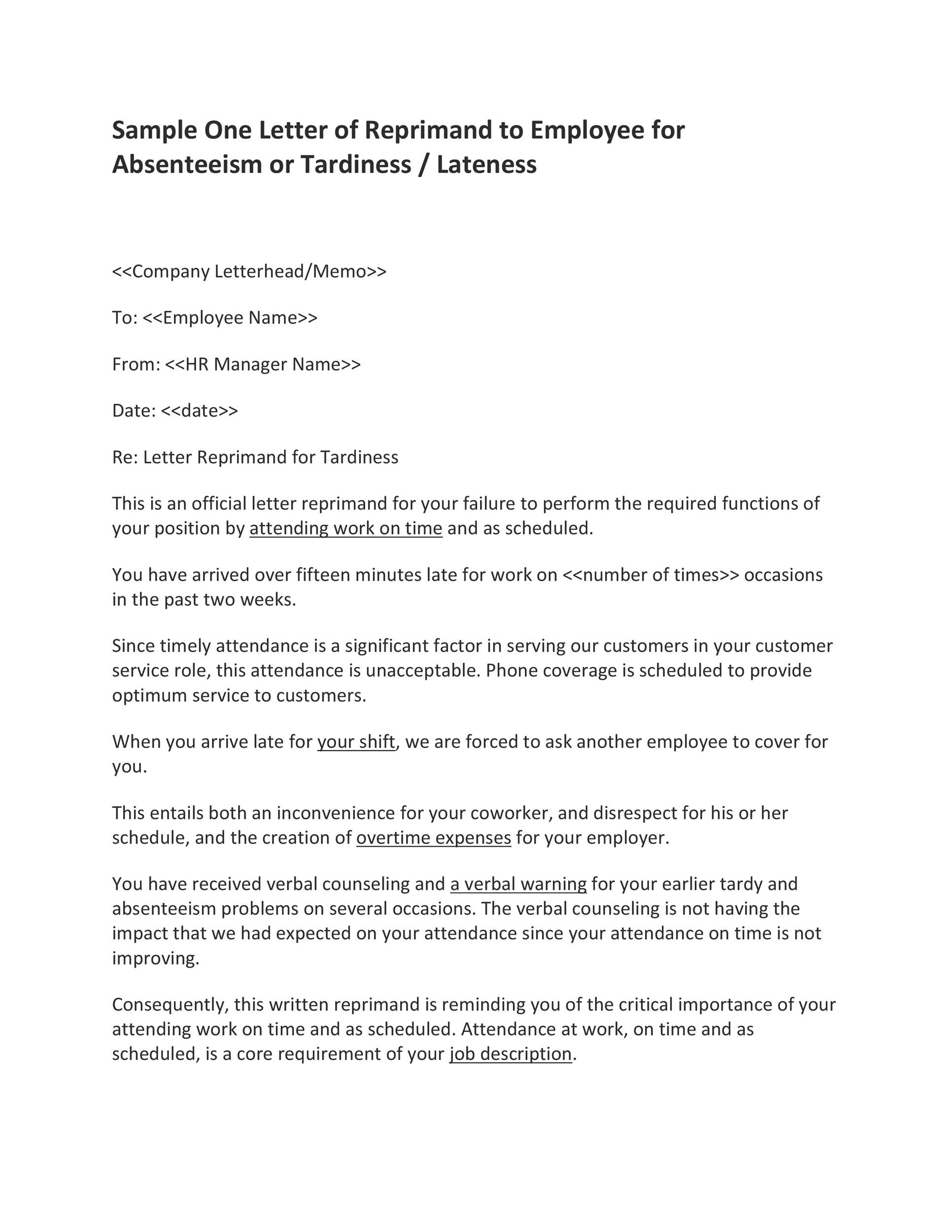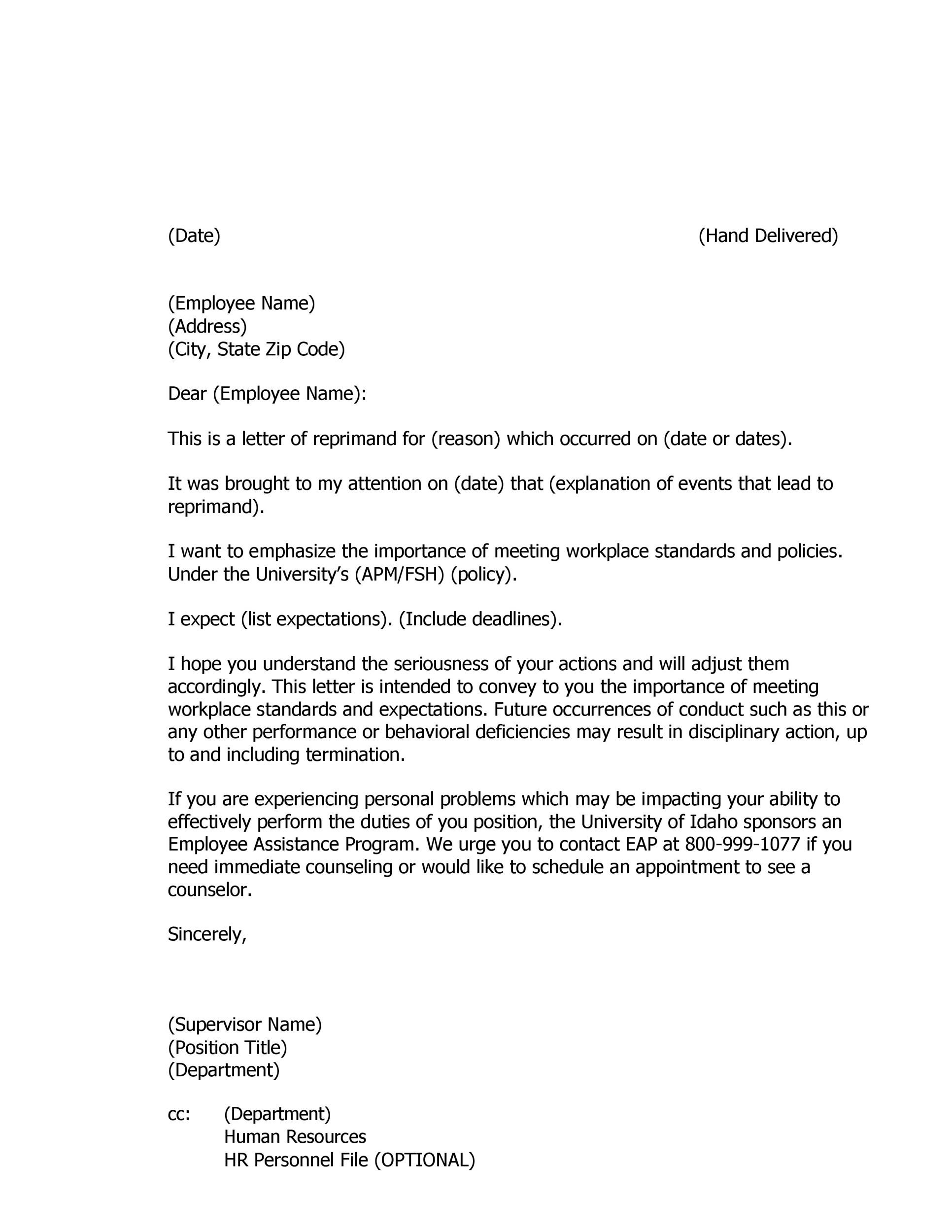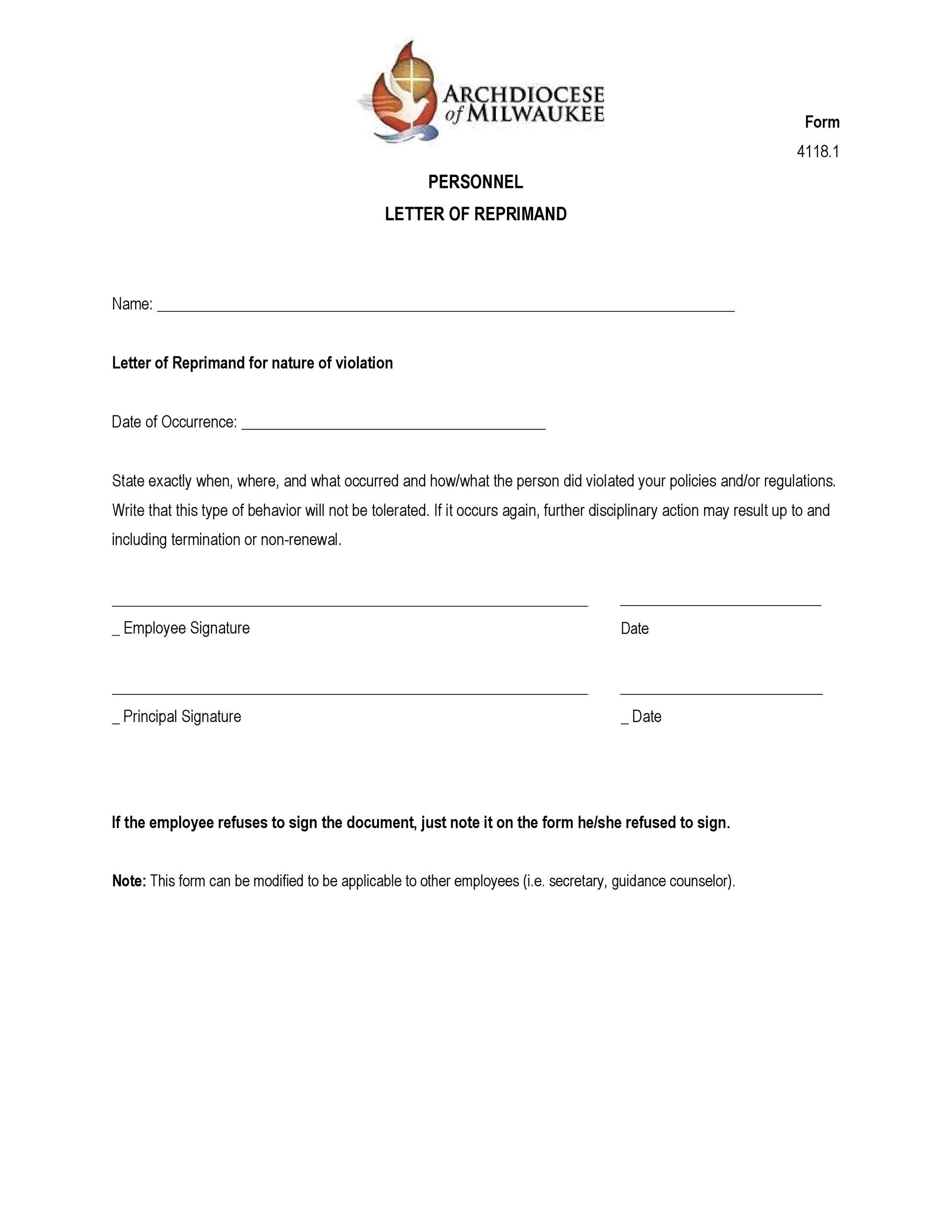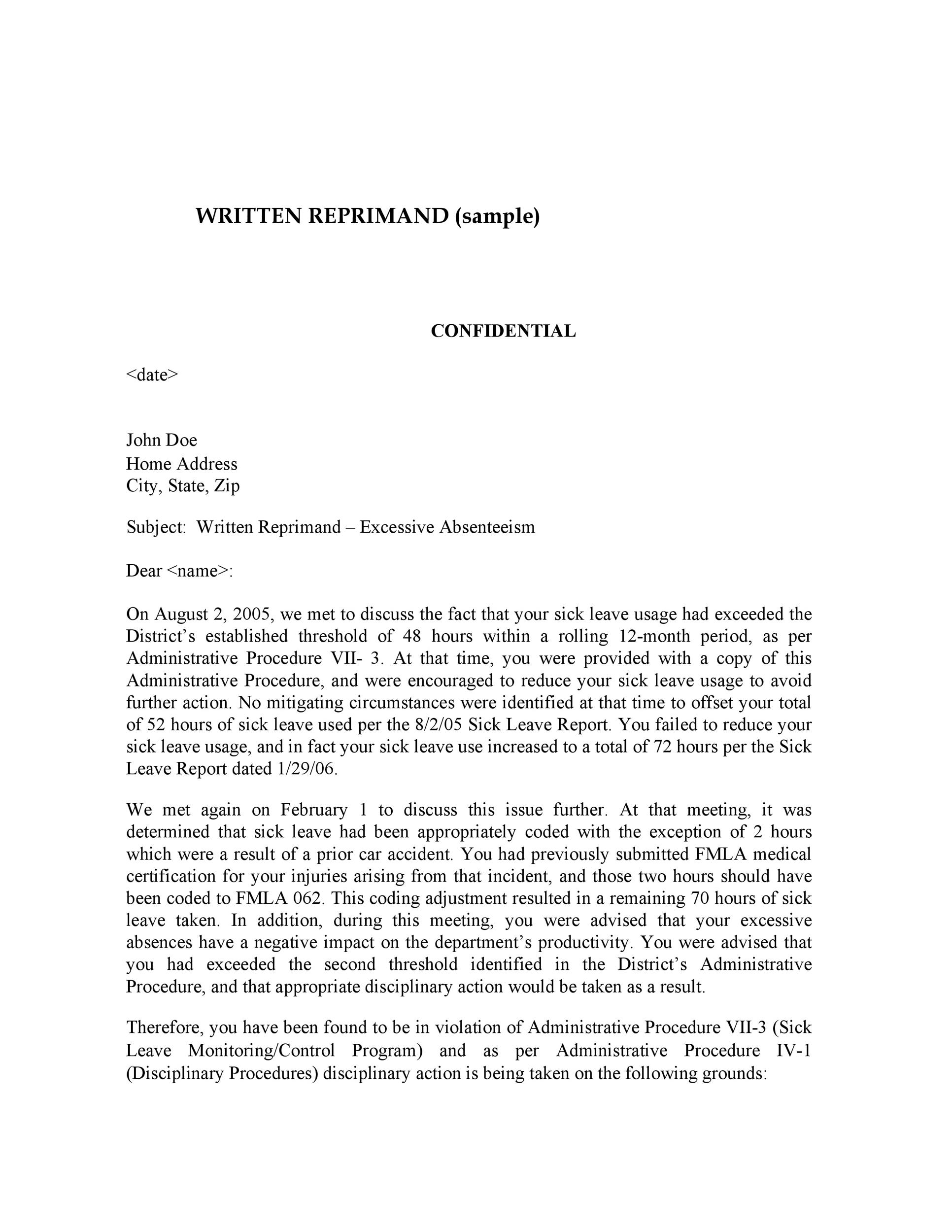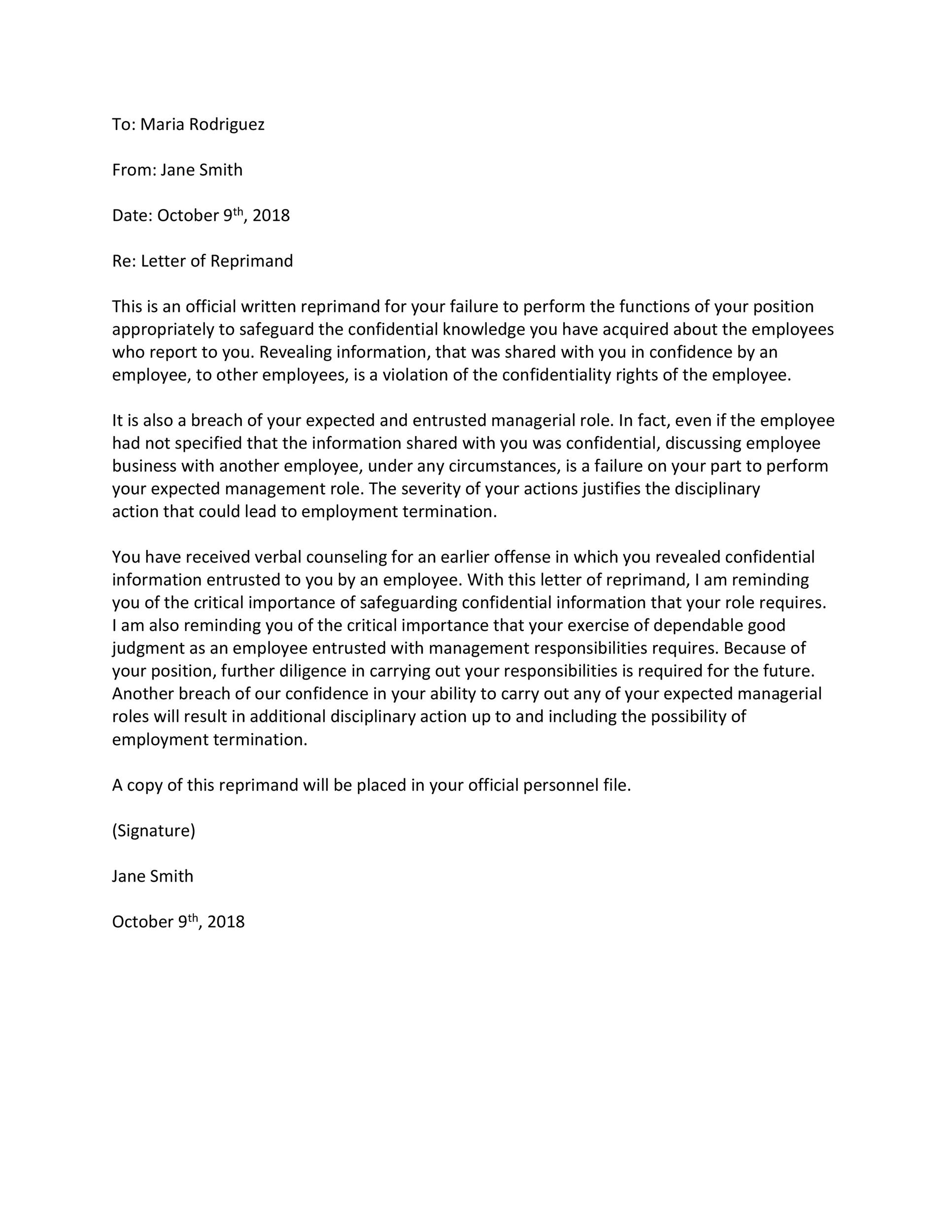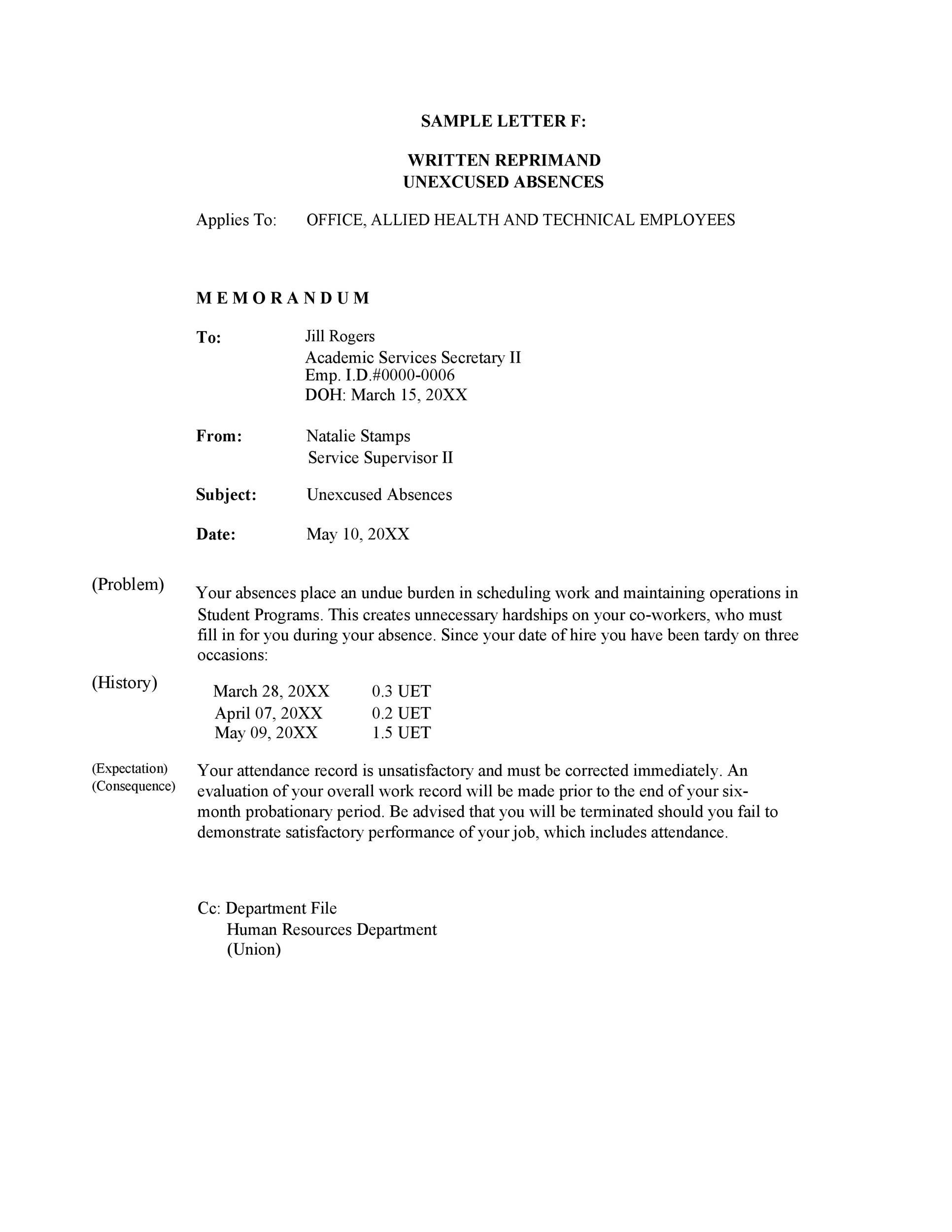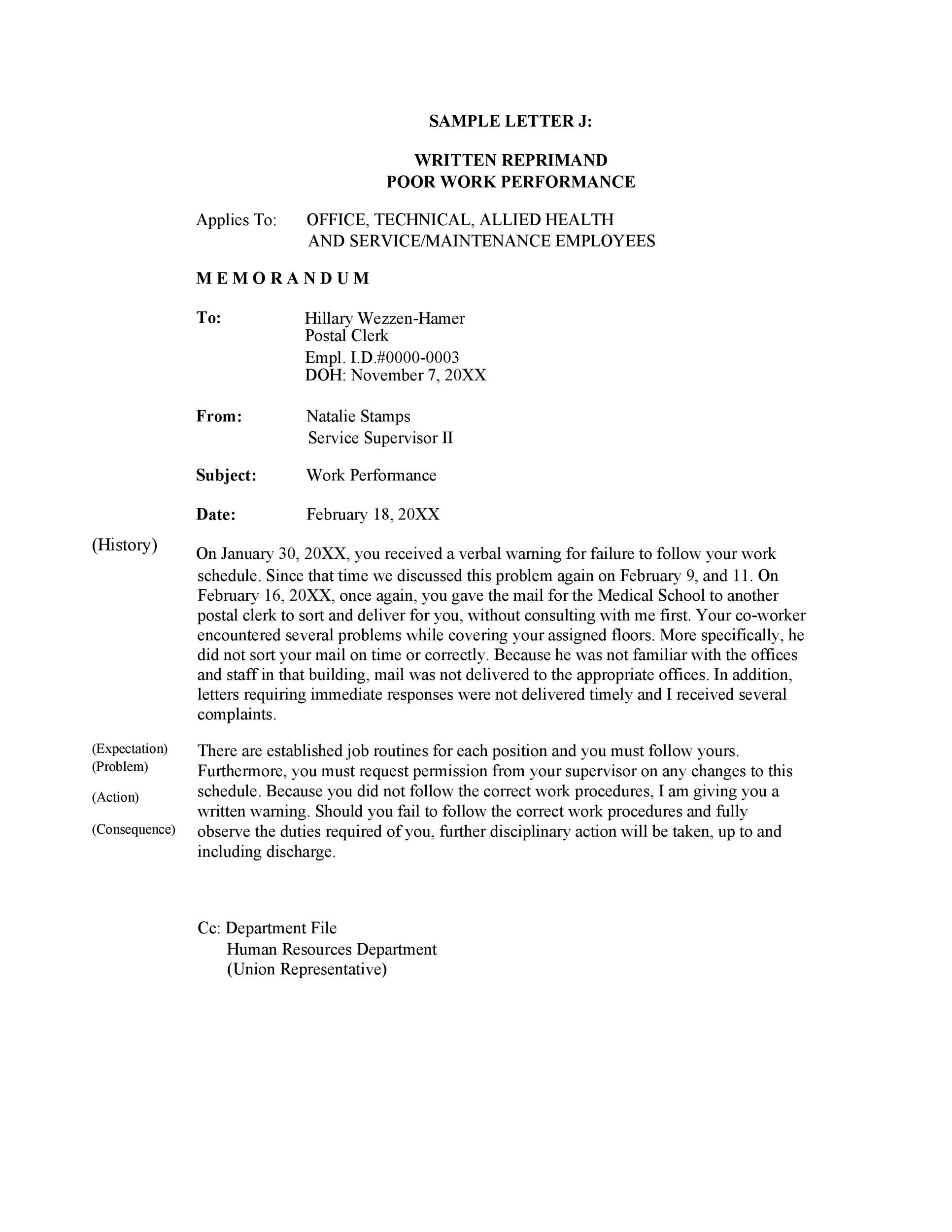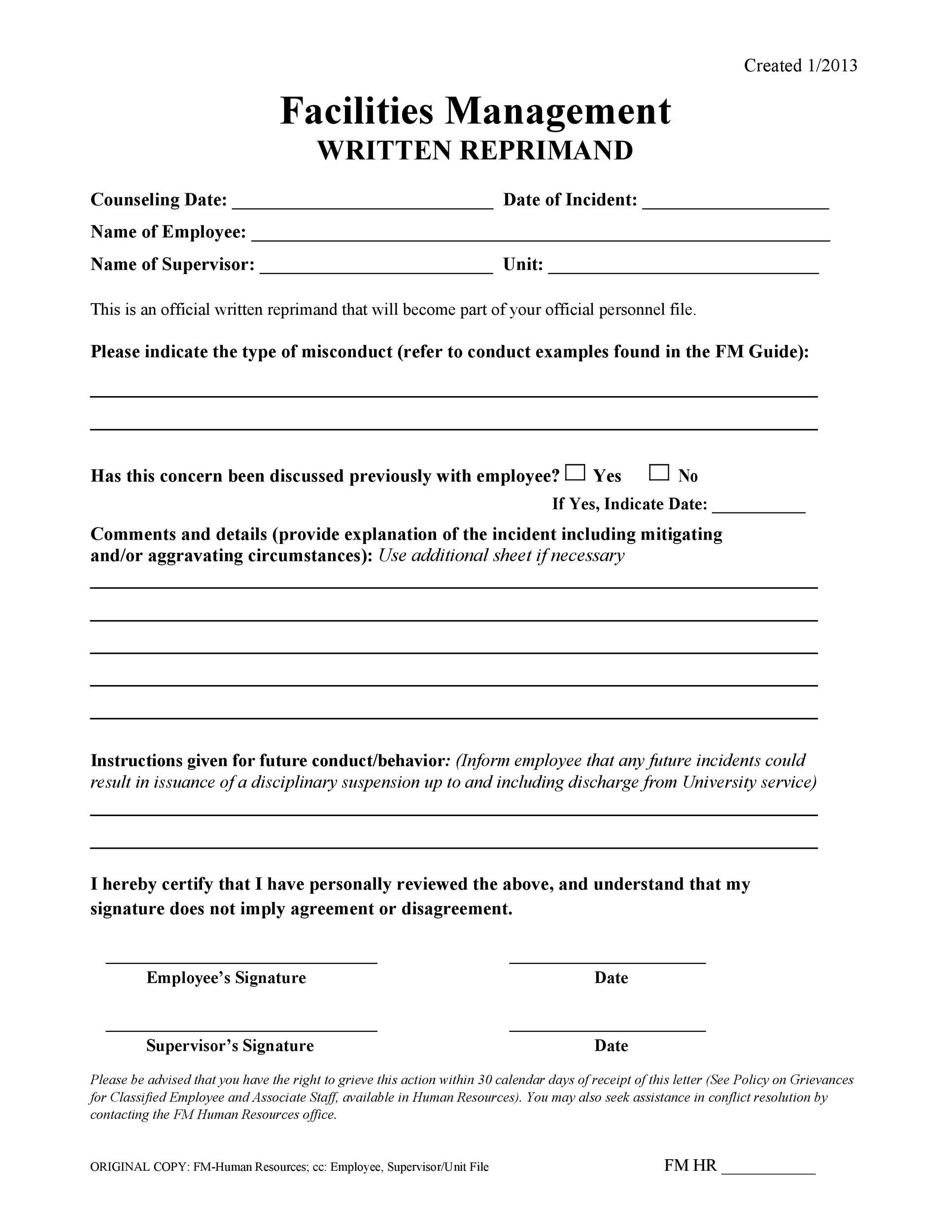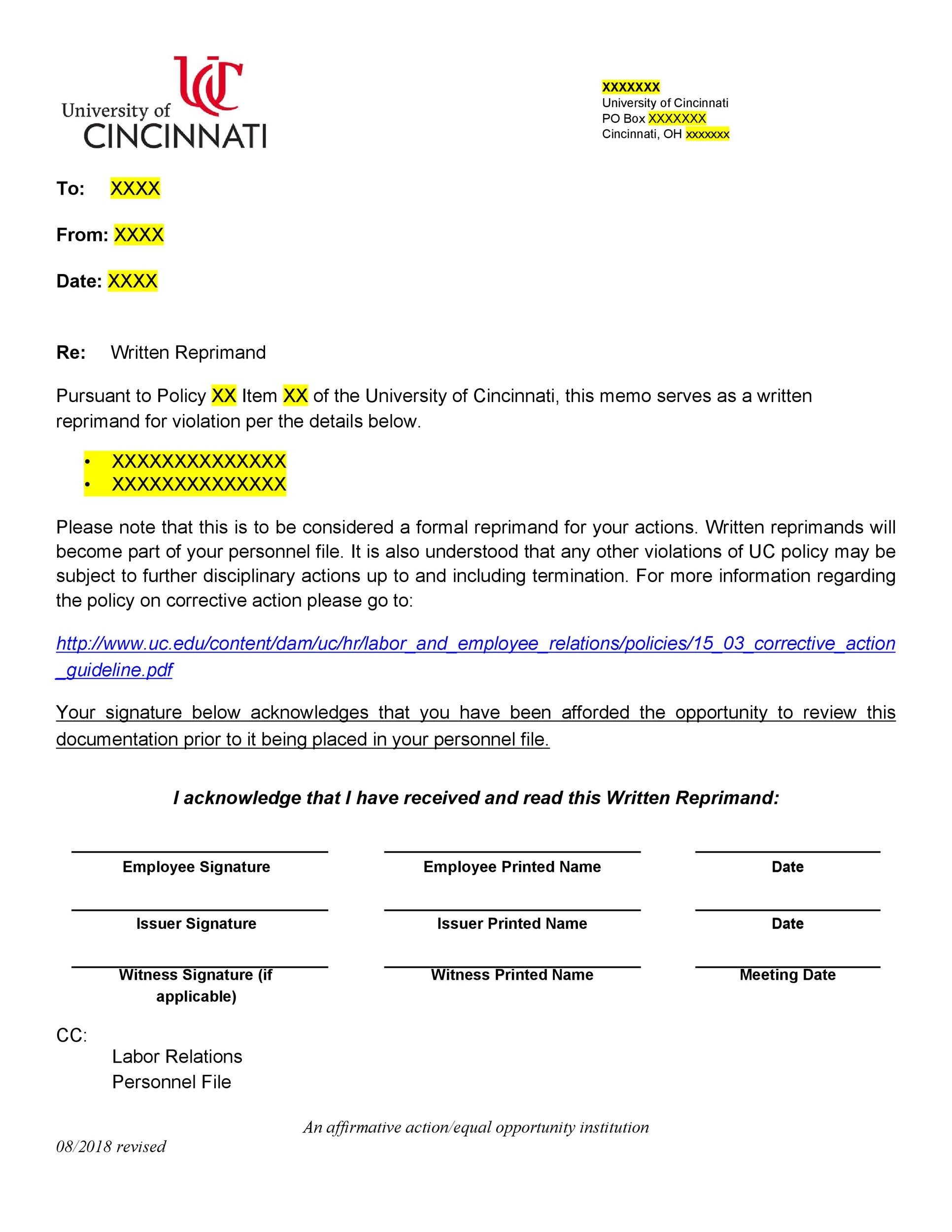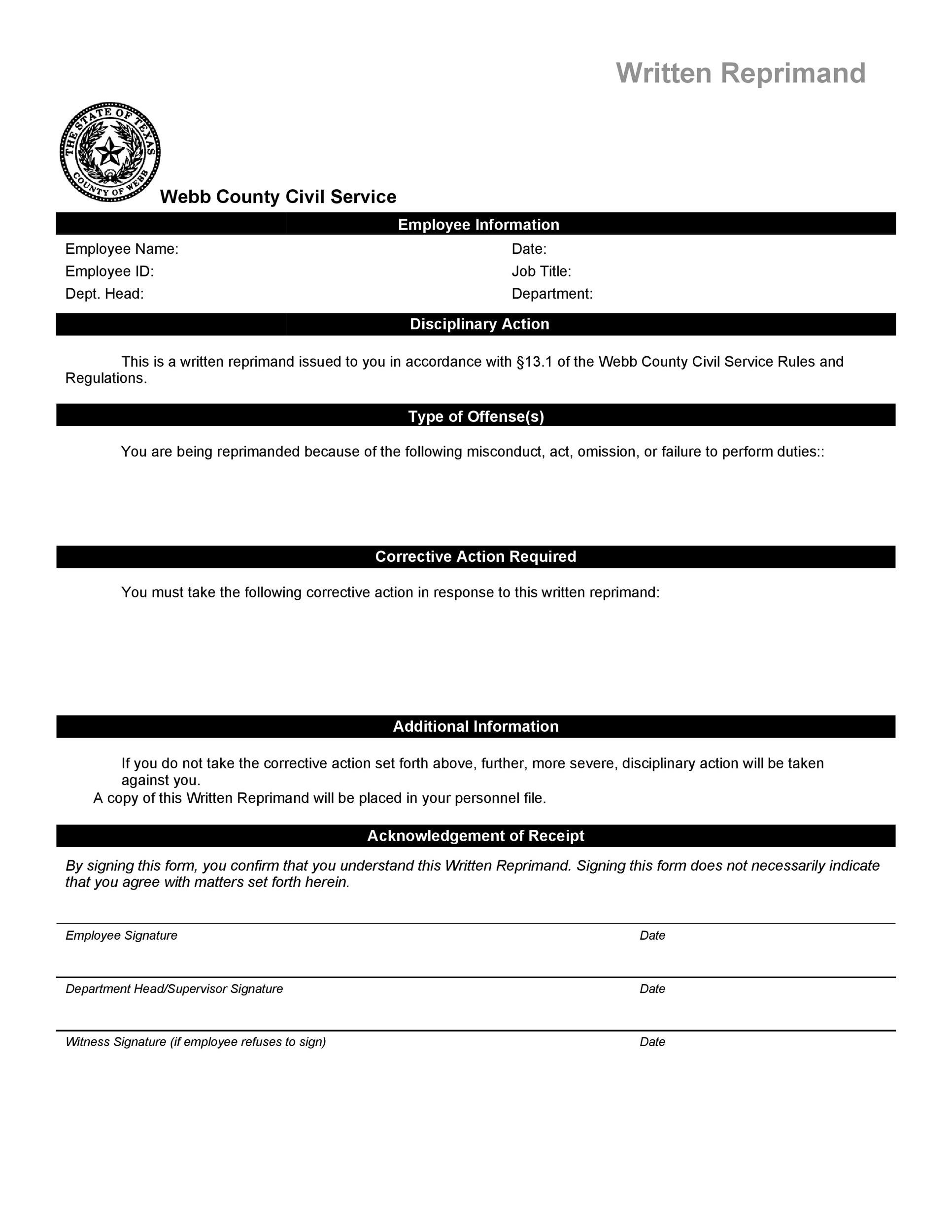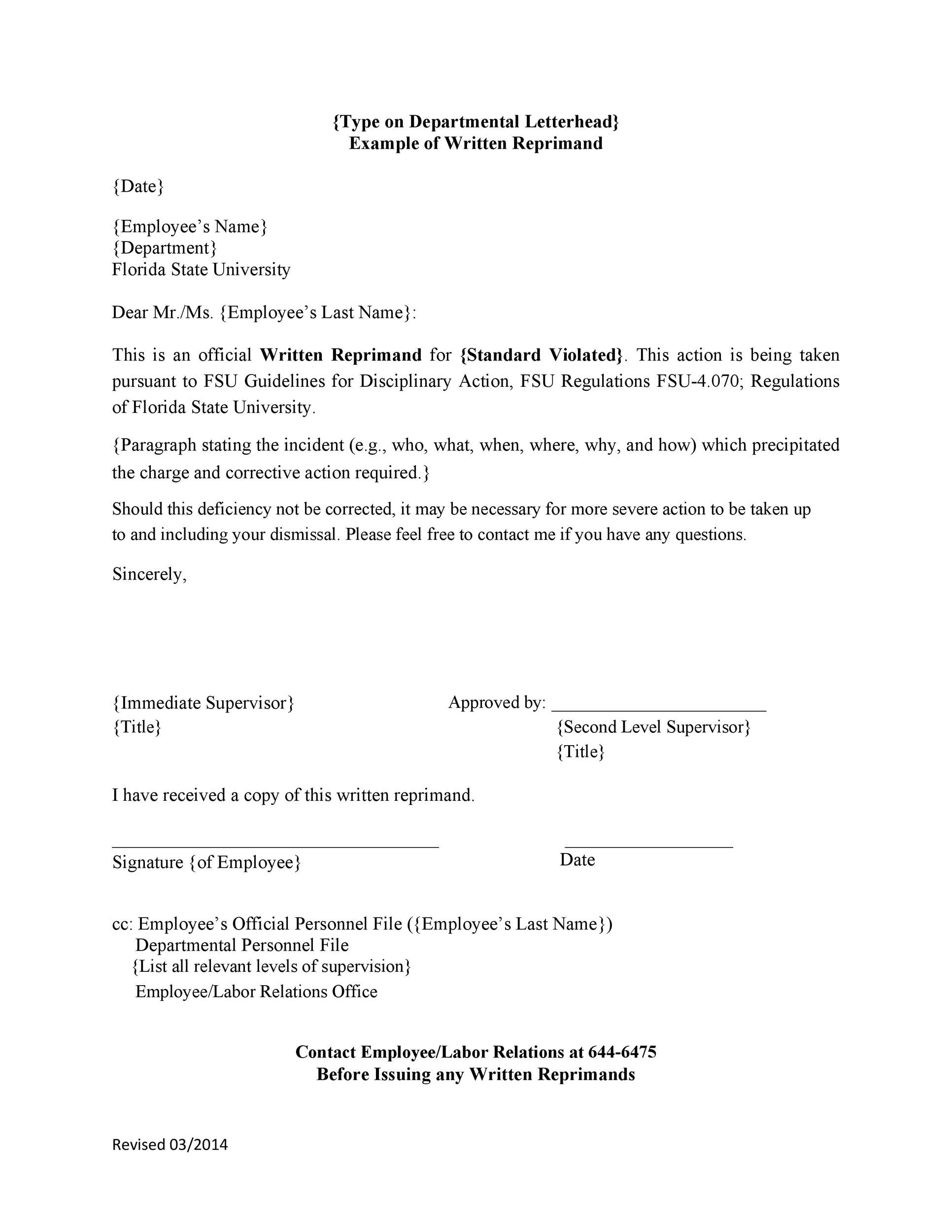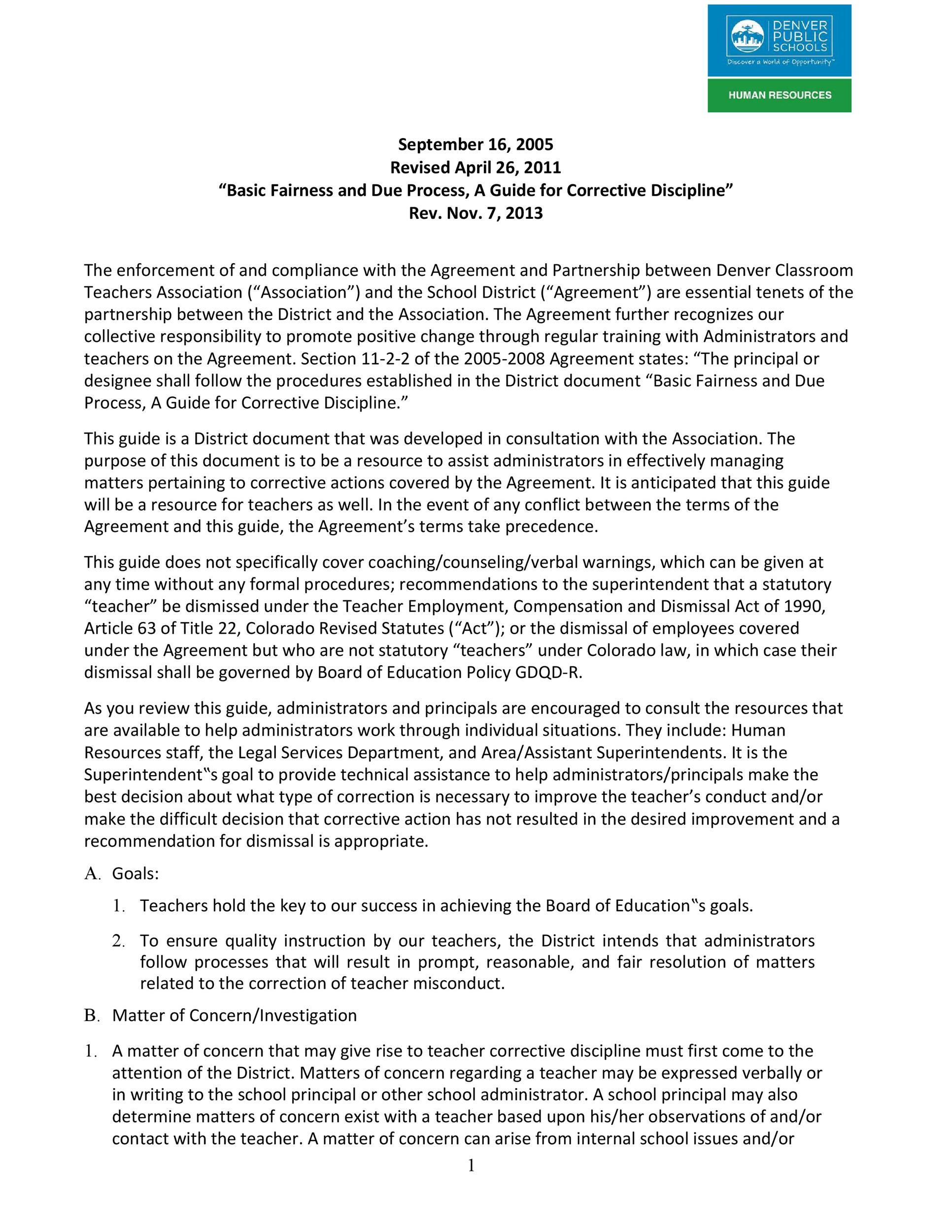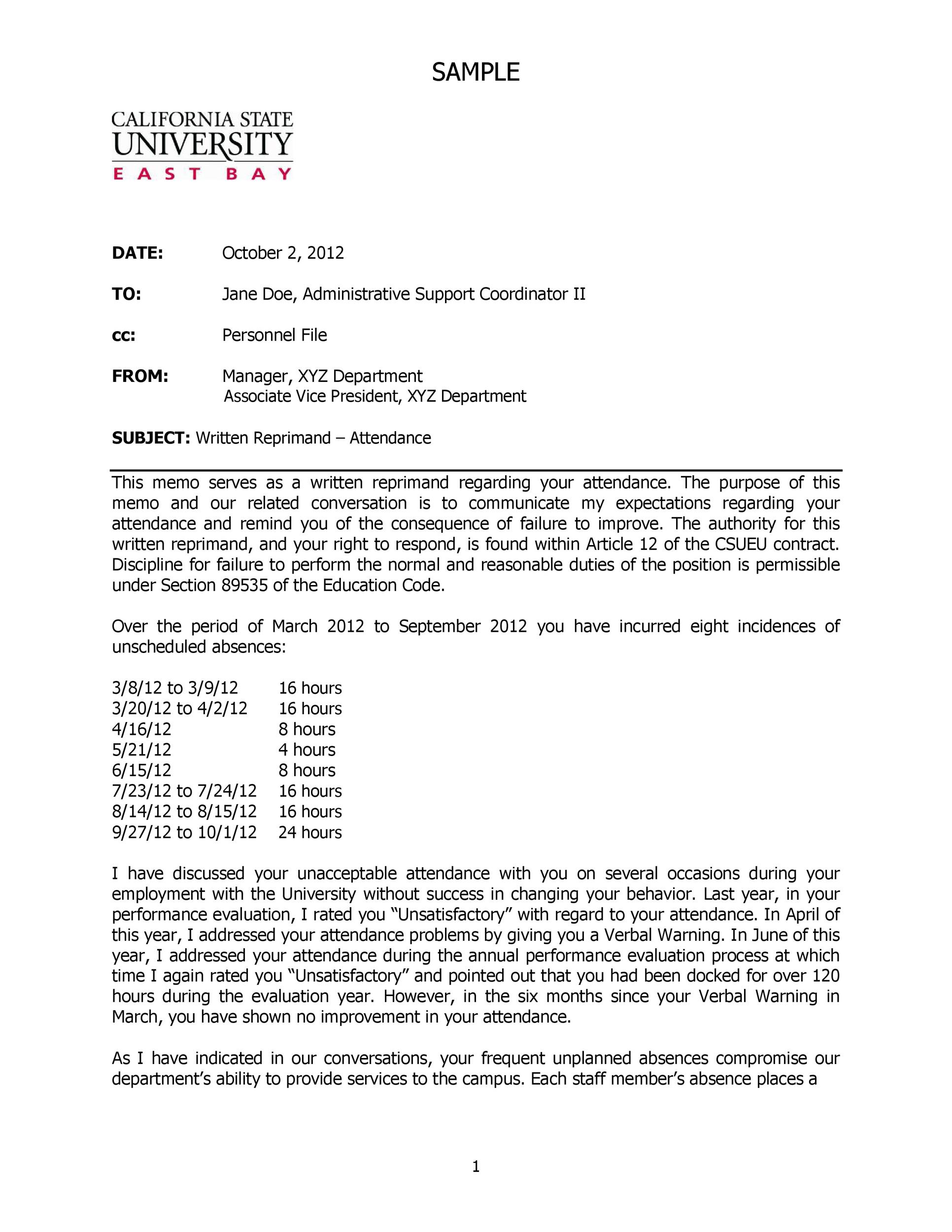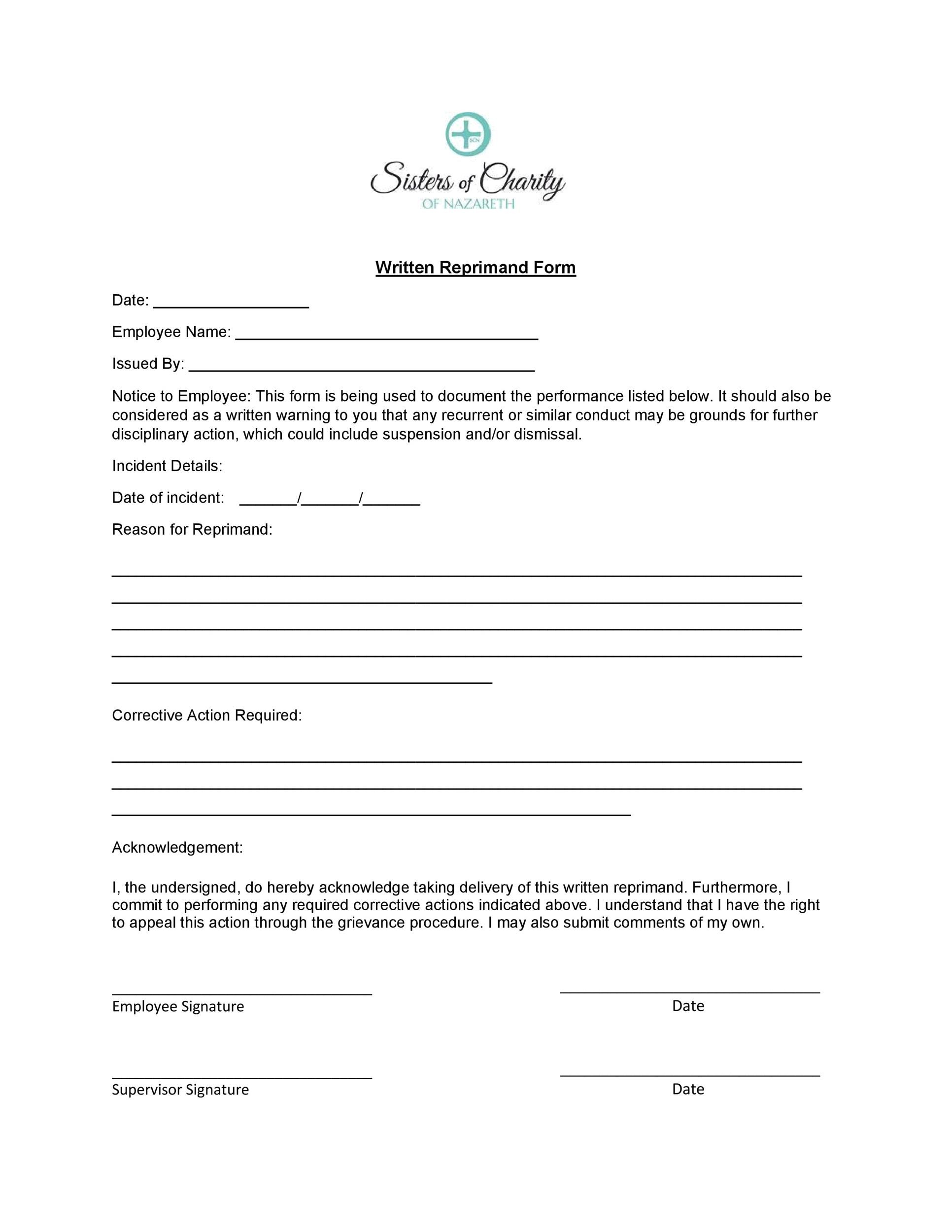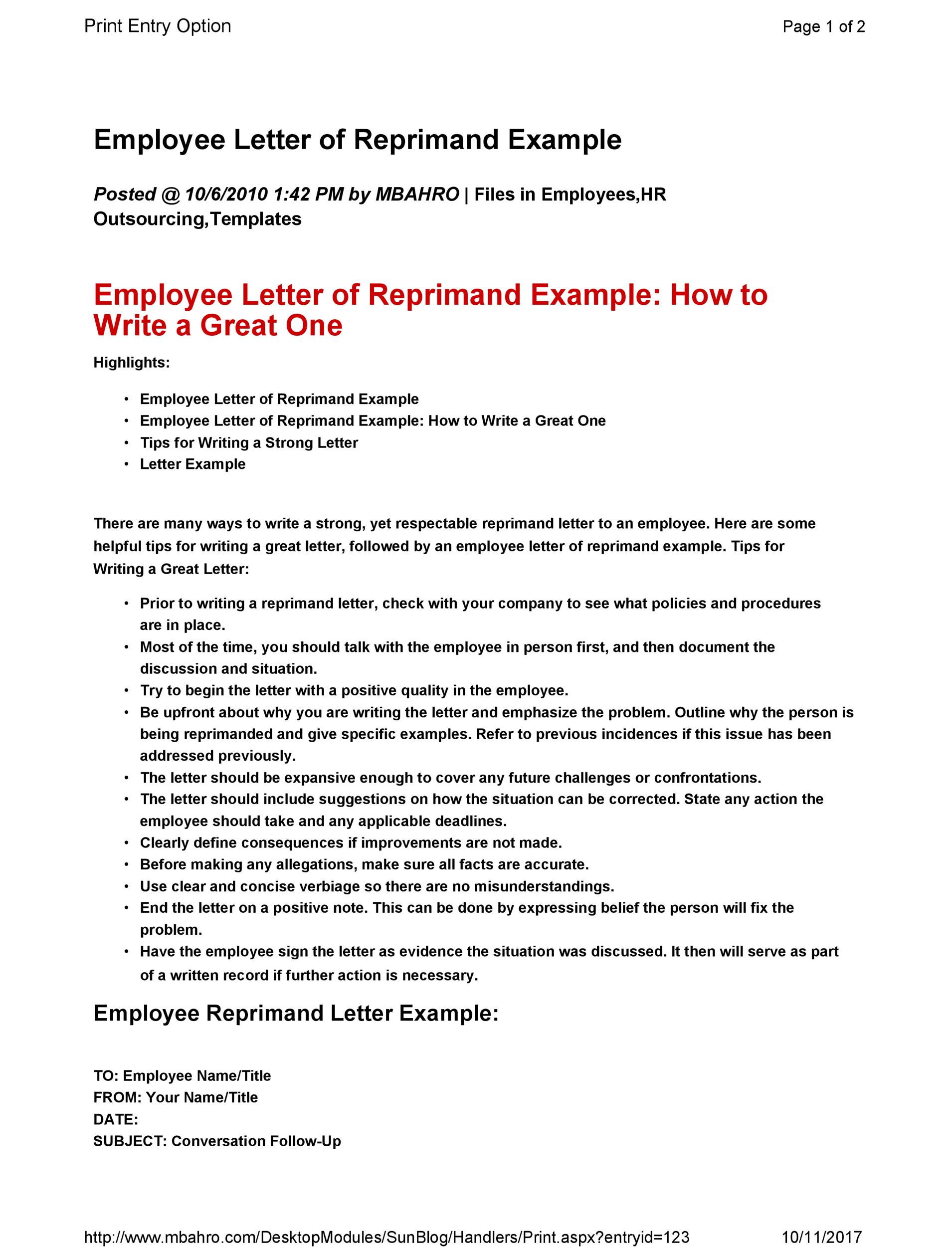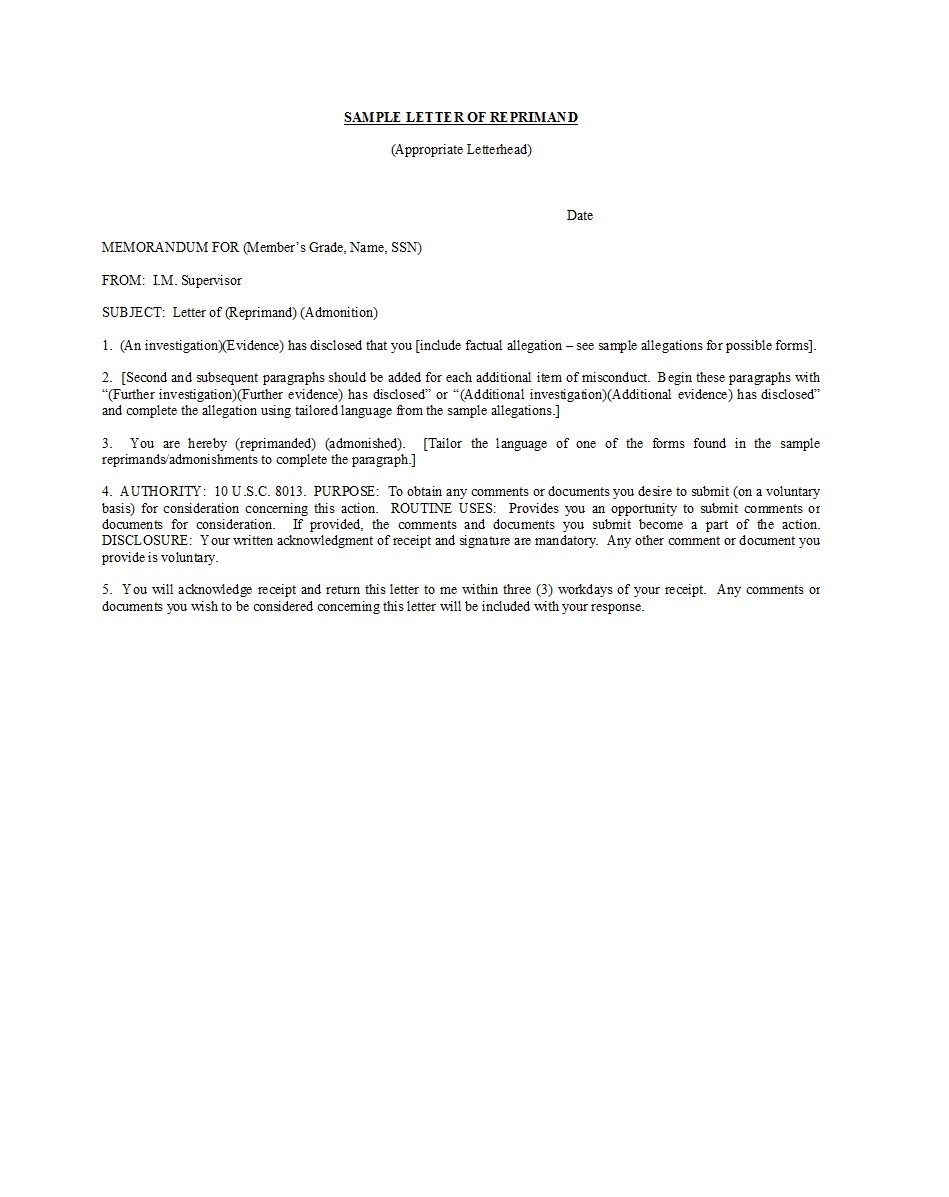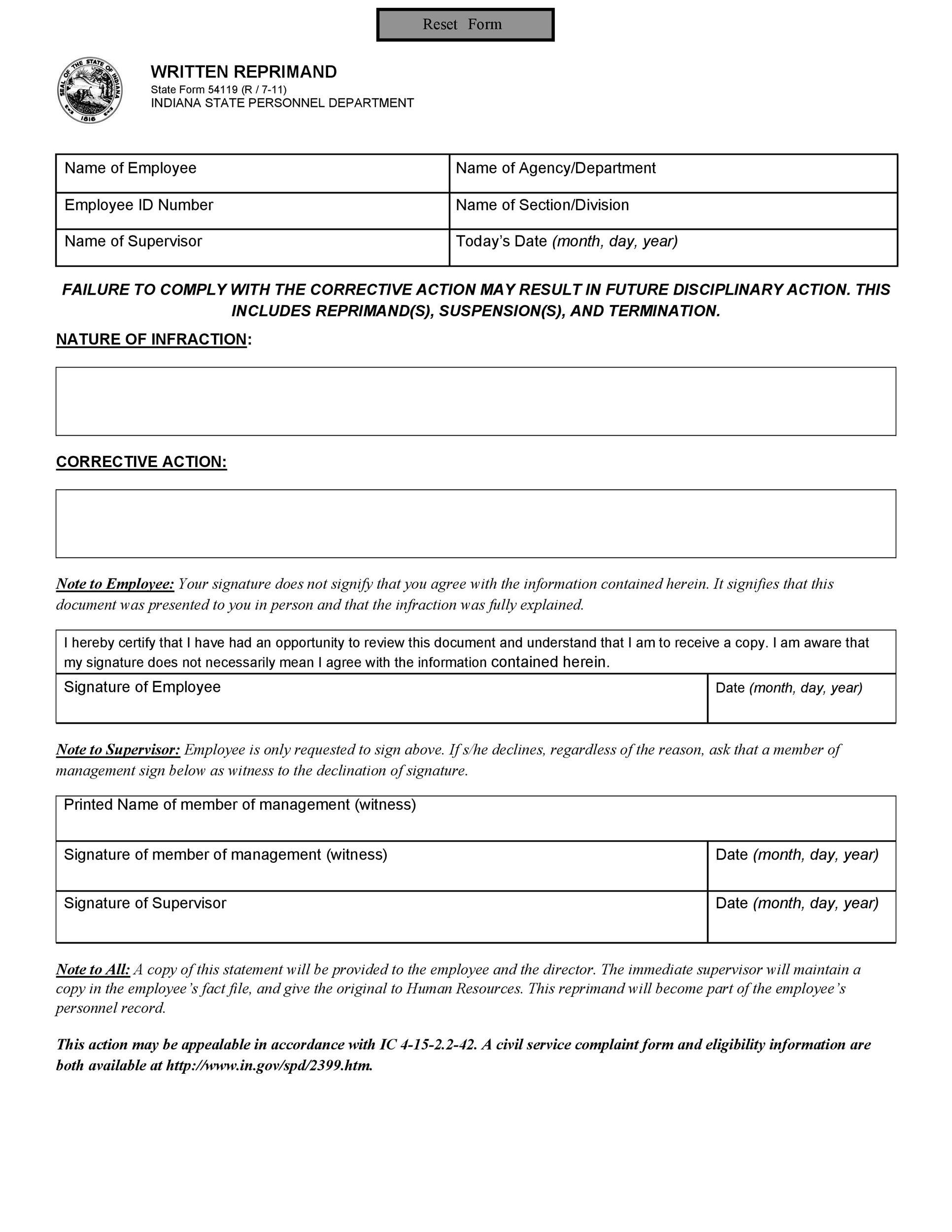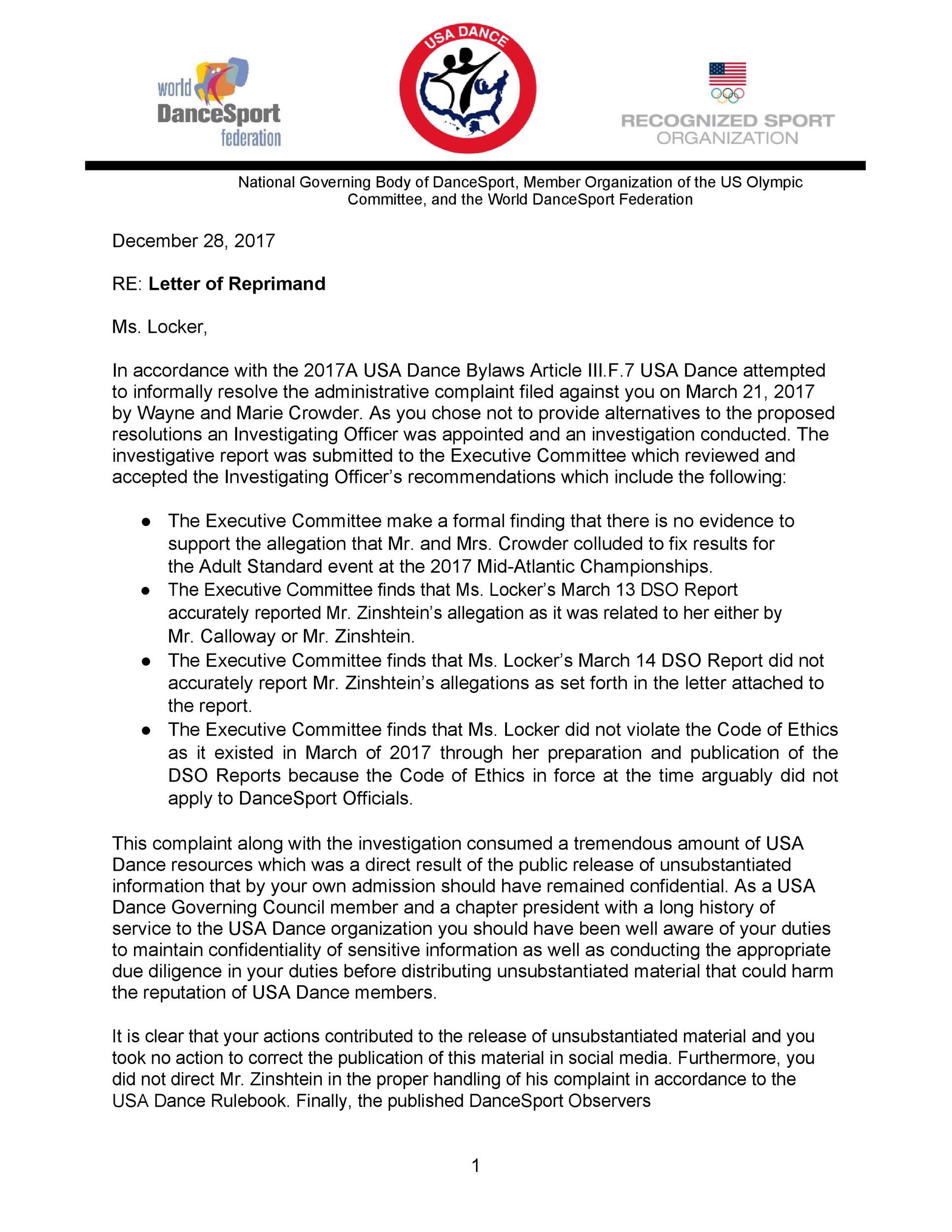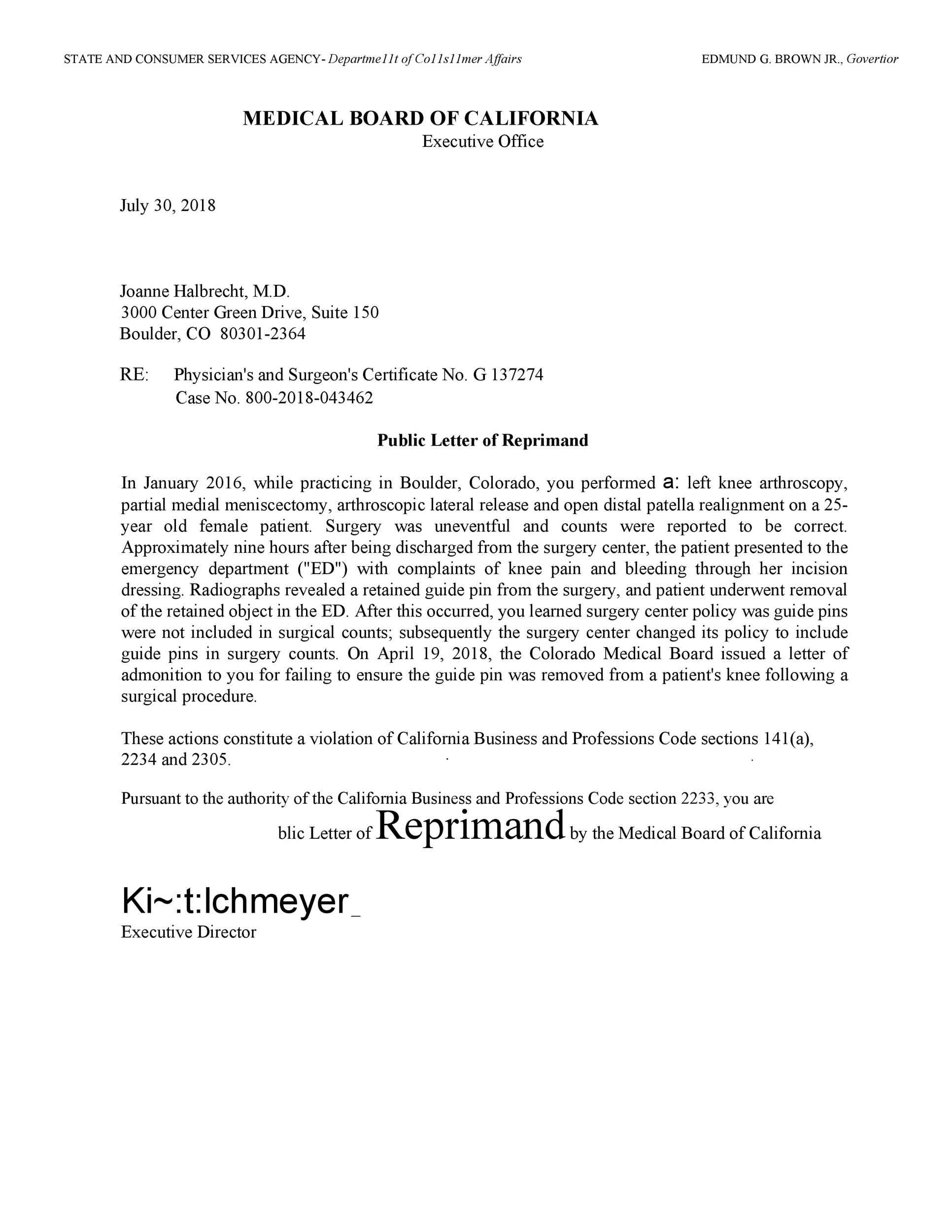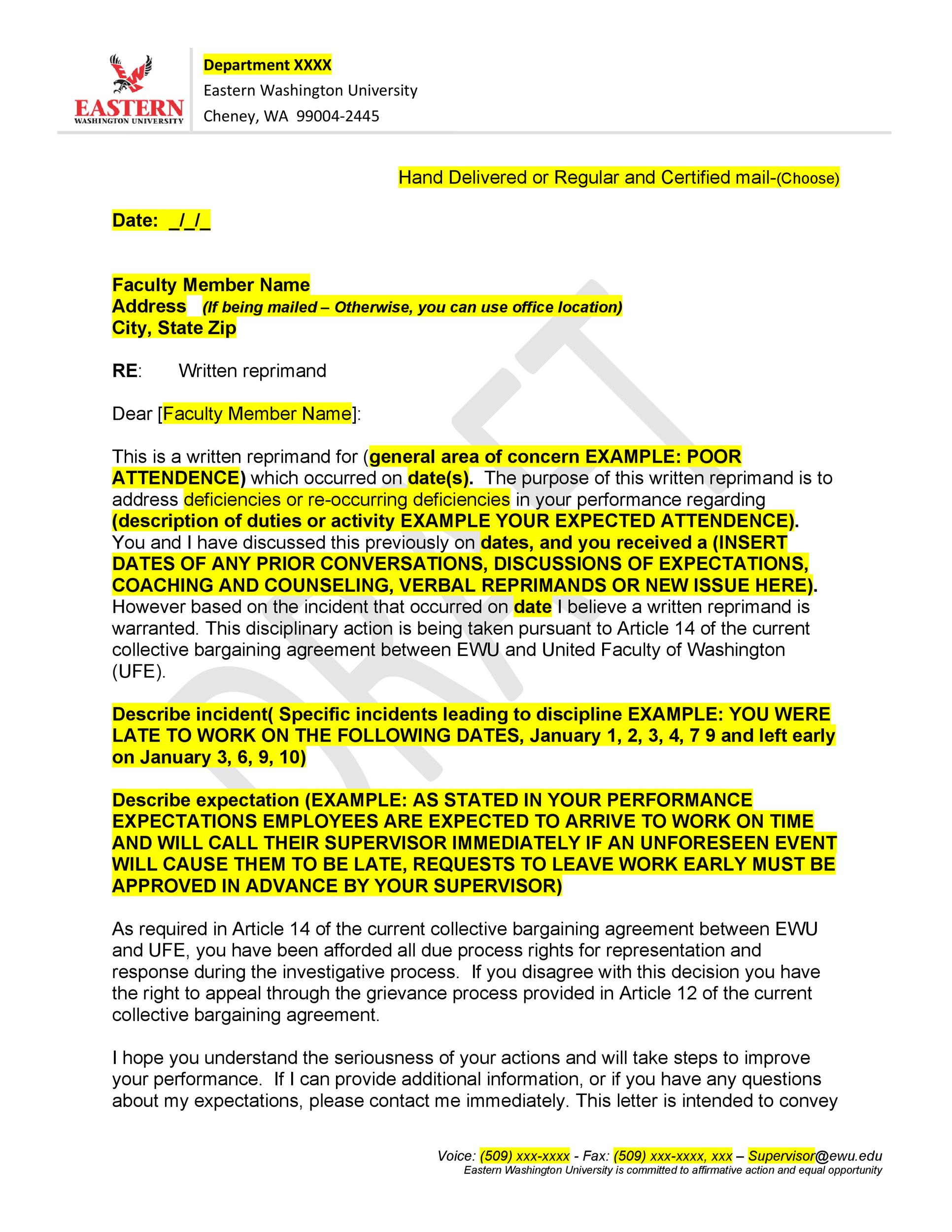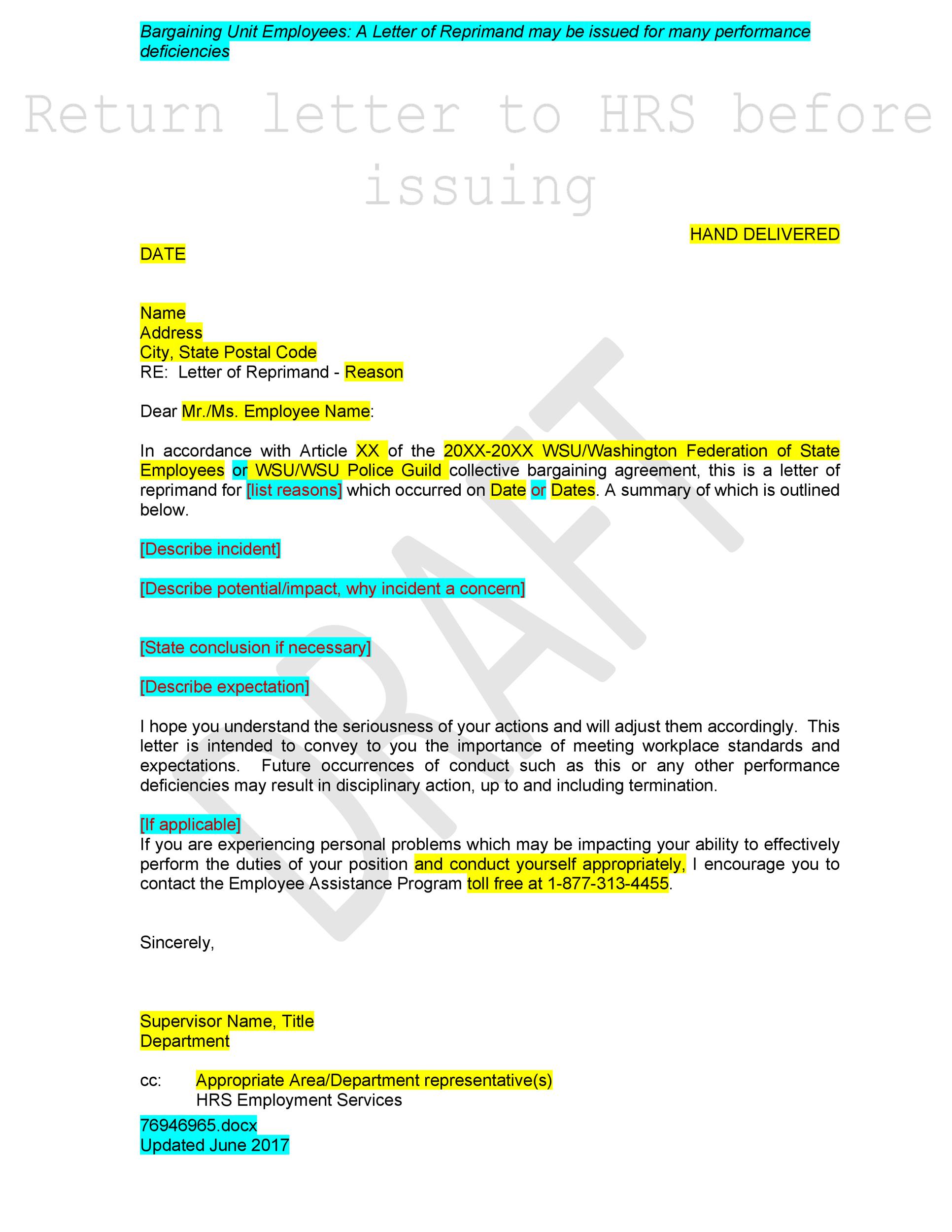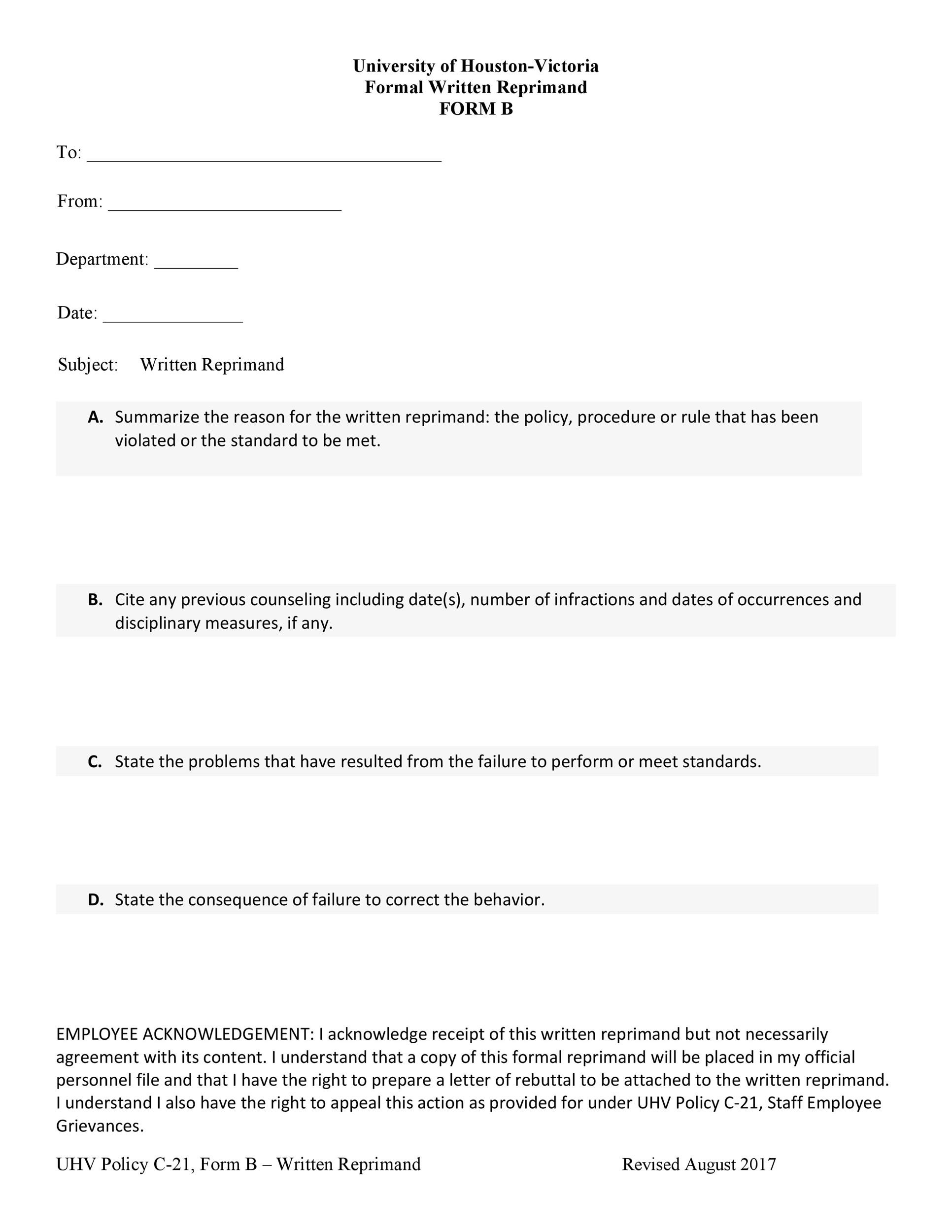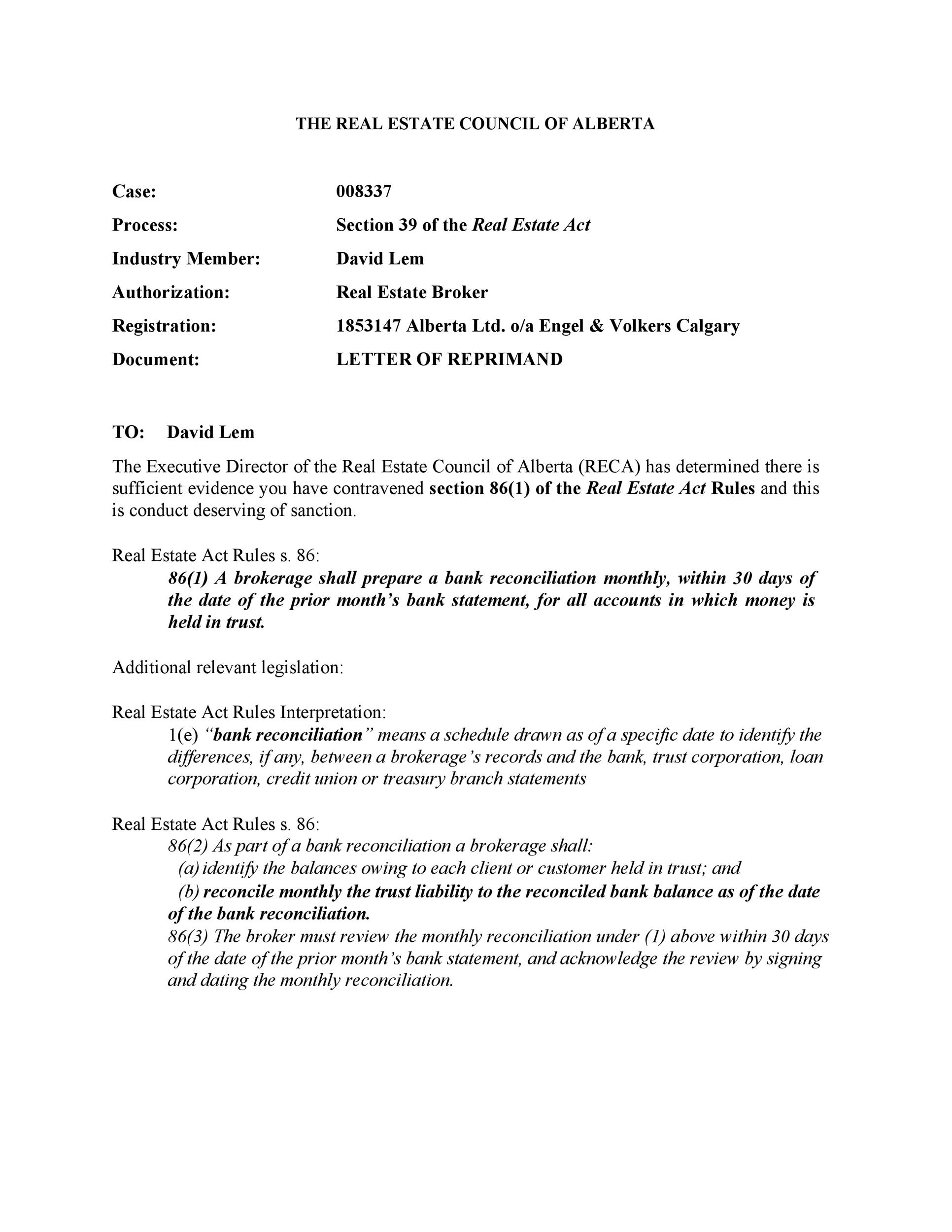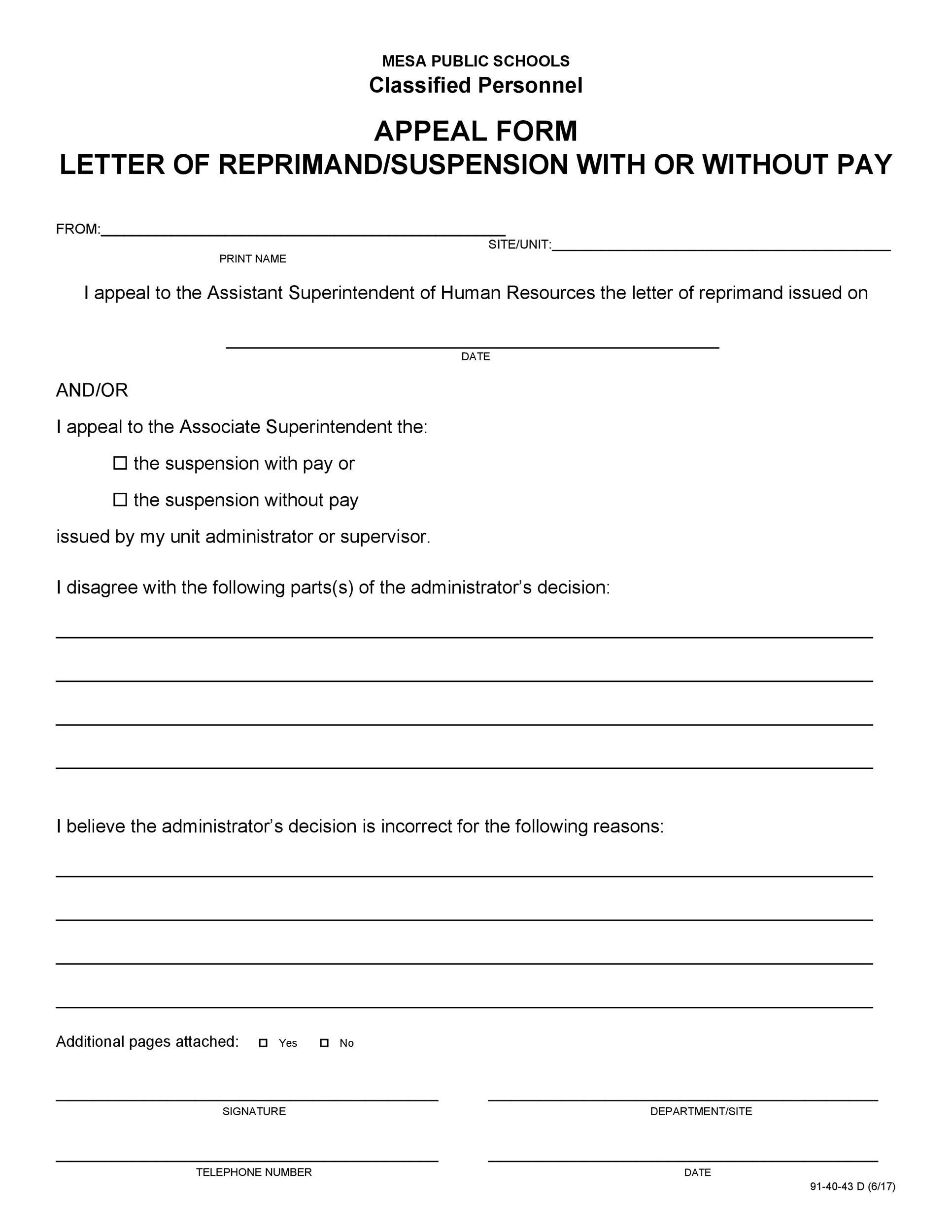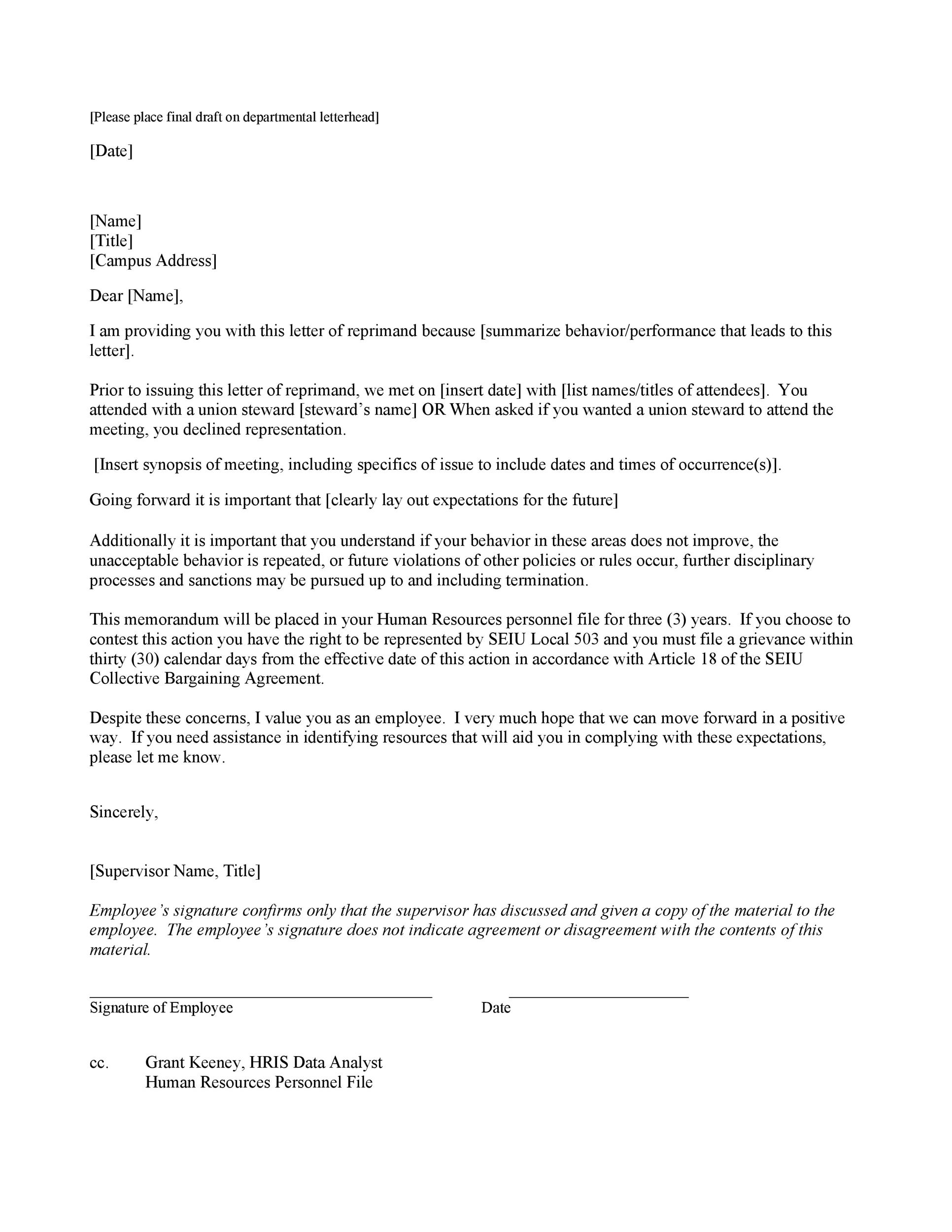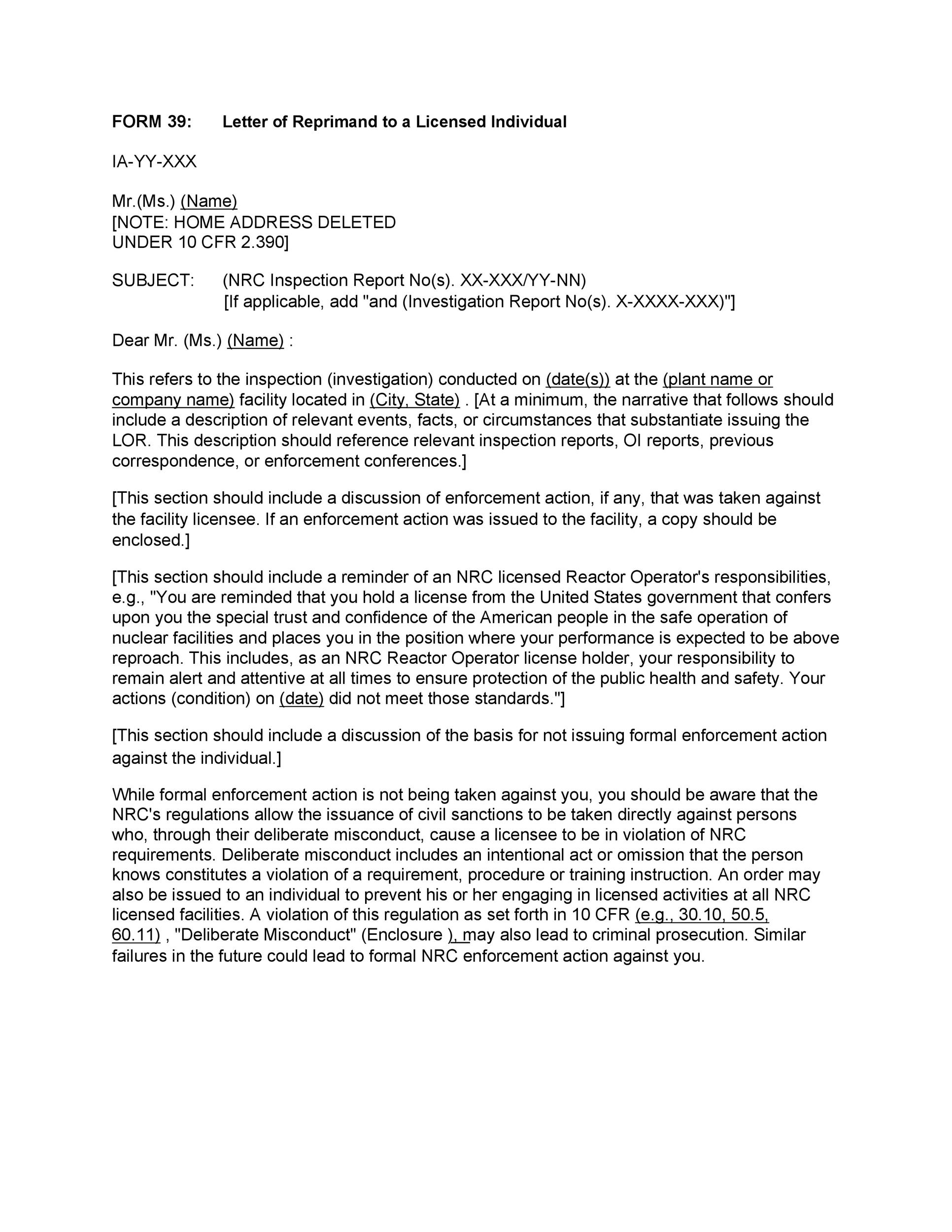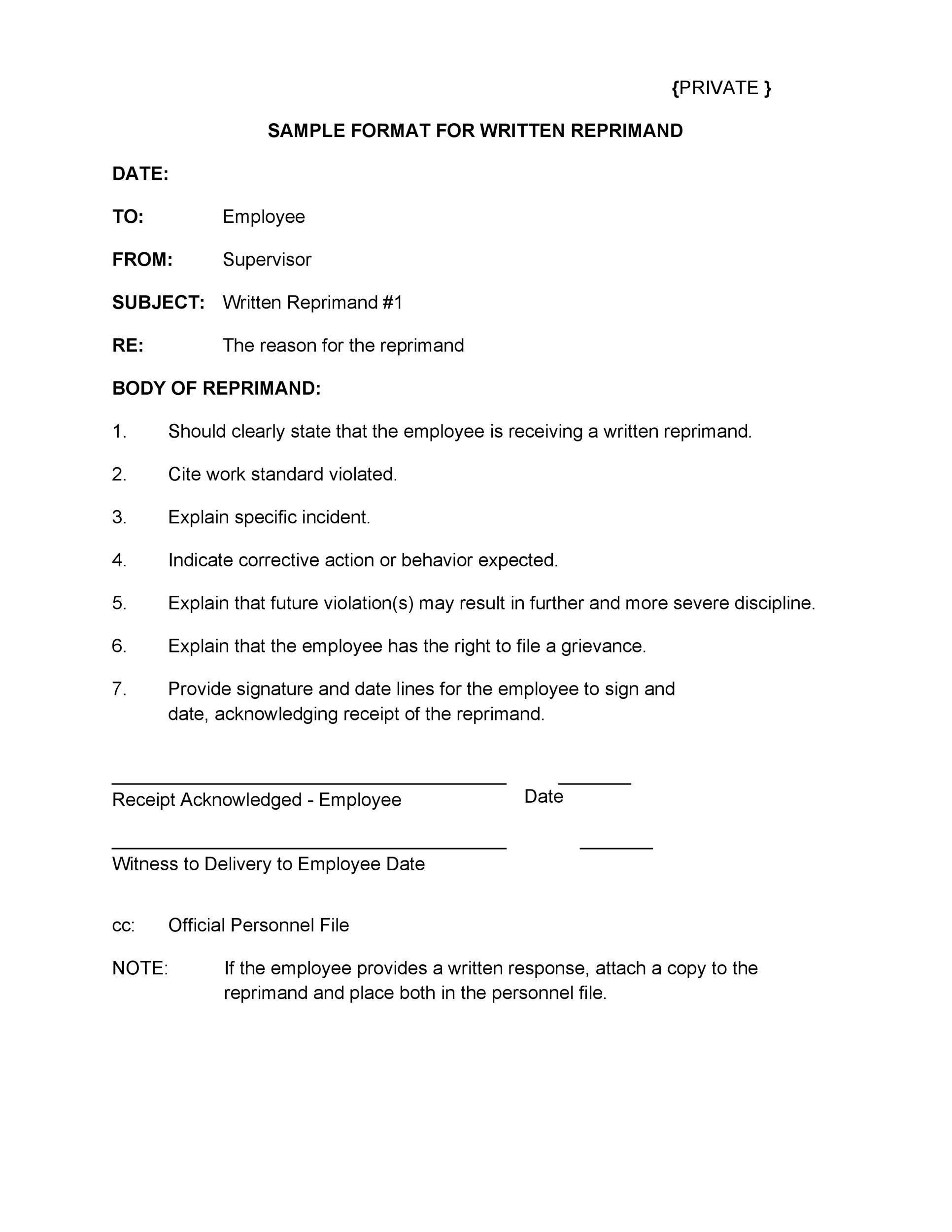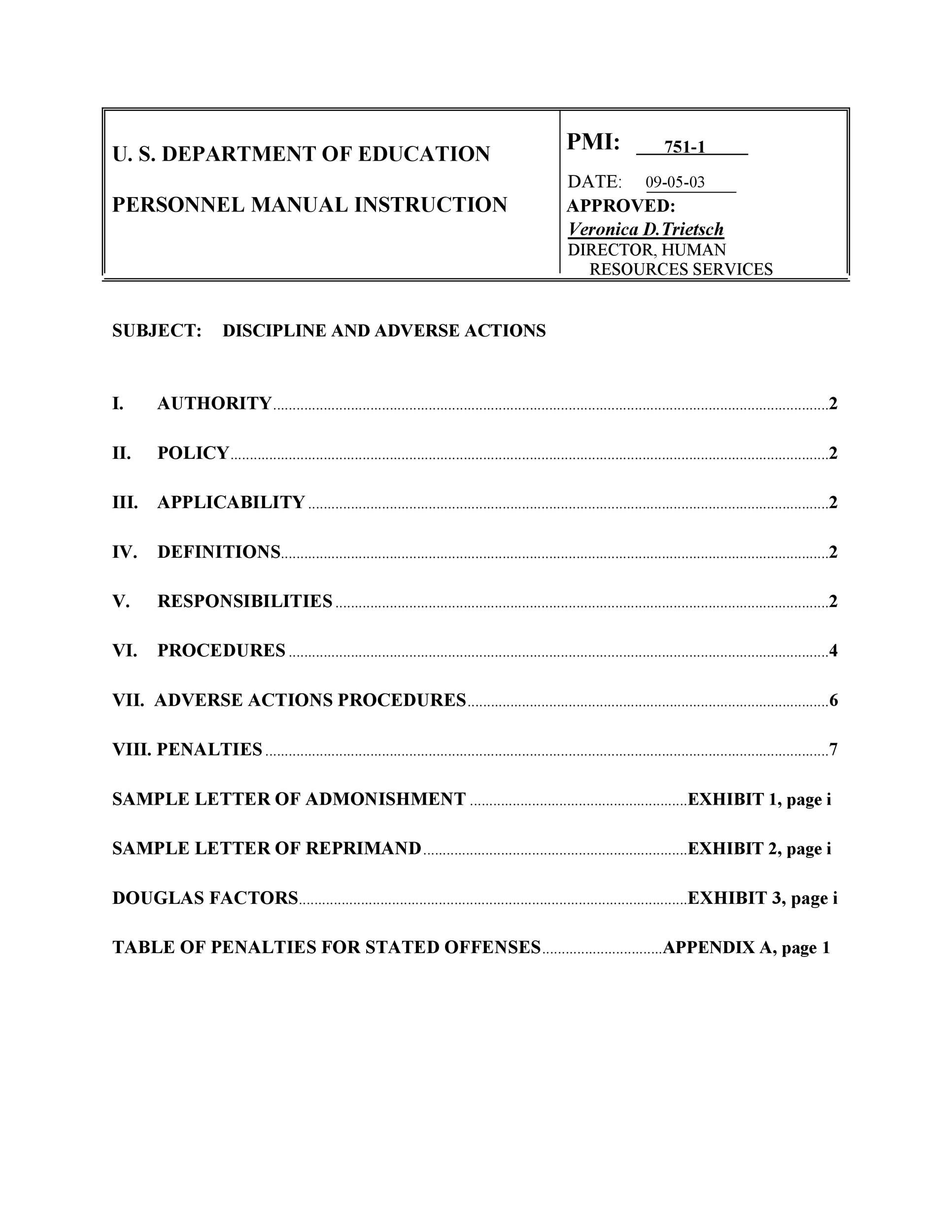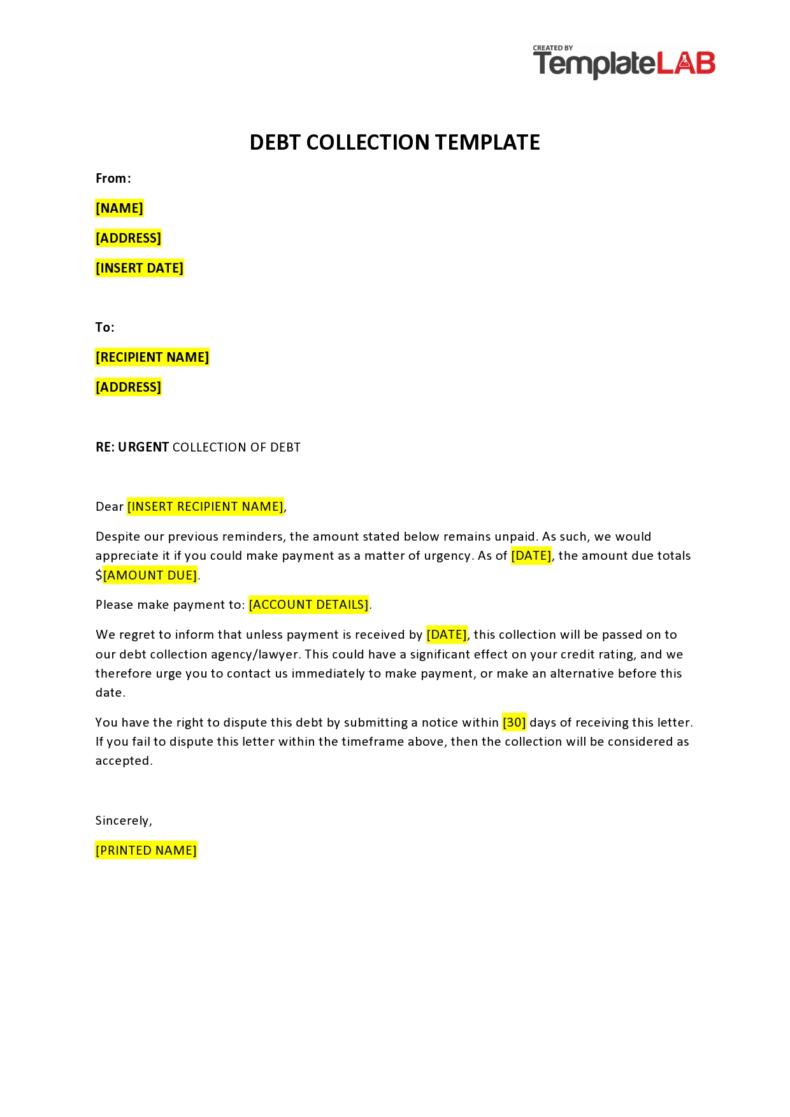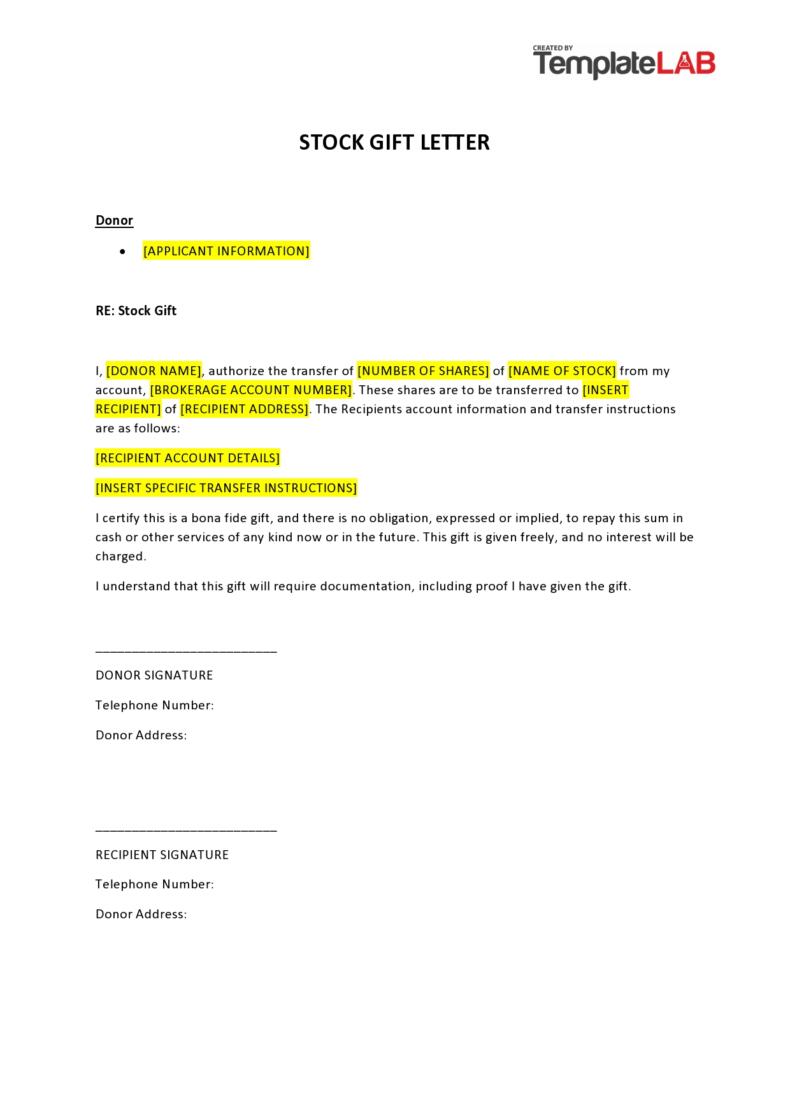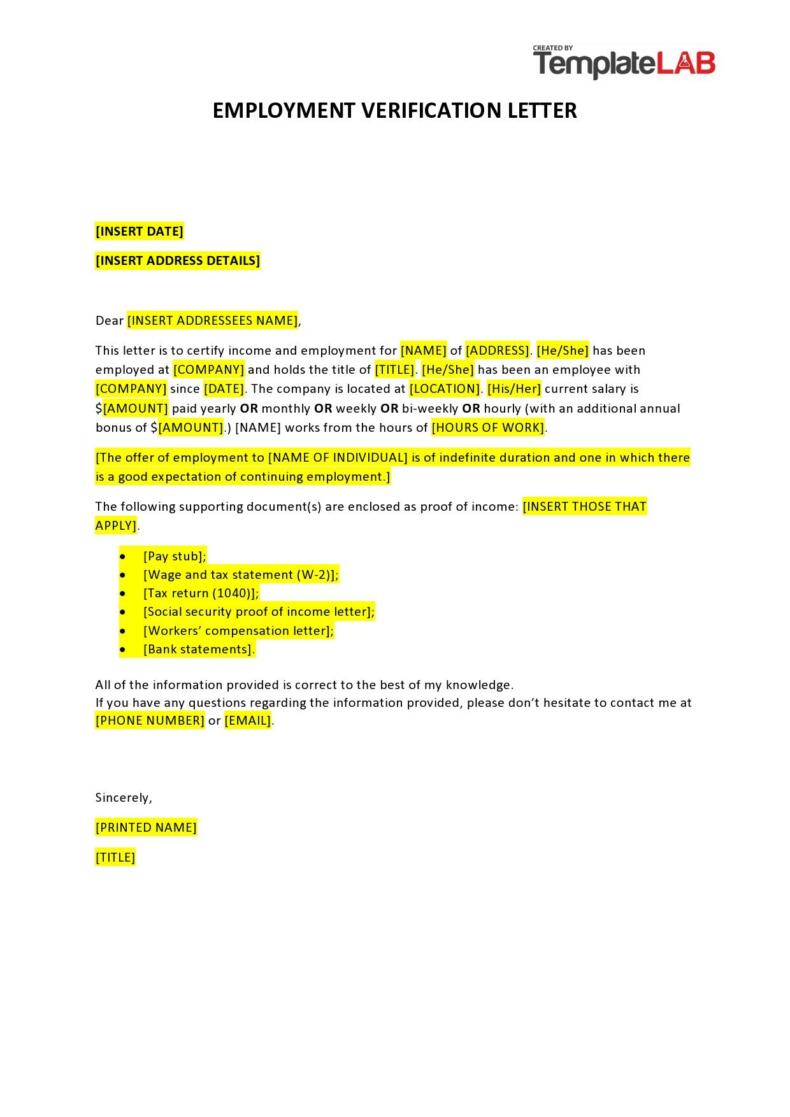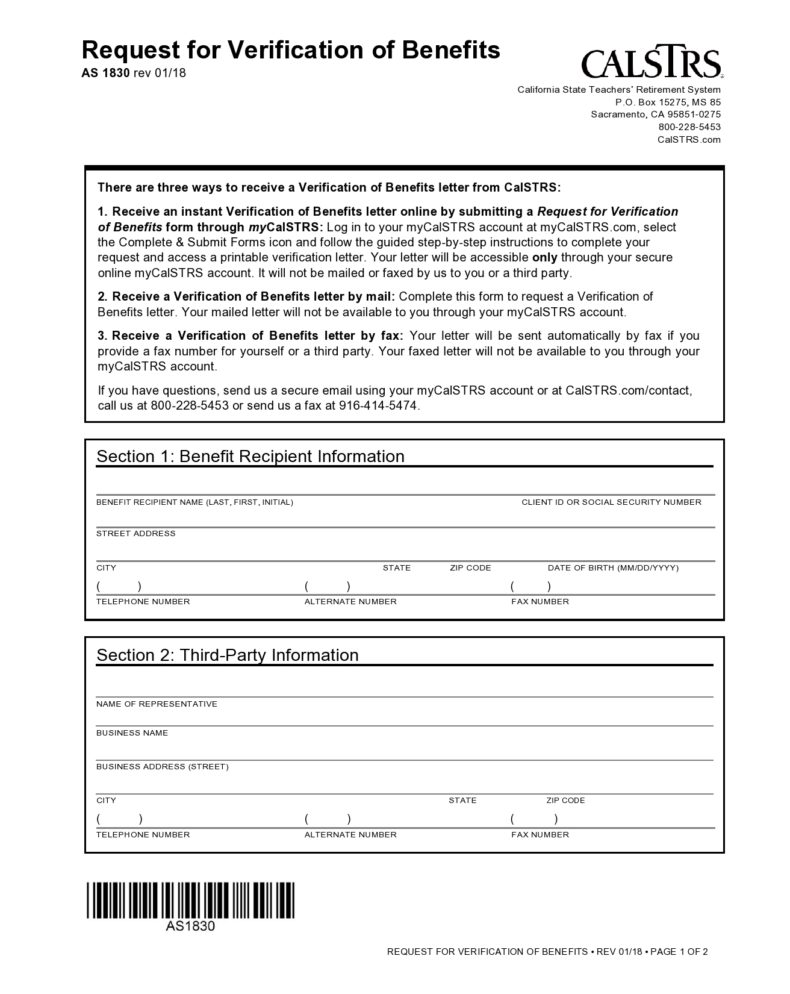You, as an employee, would never want to receive a letter of reprimand because it would reflect negatively on his performance and spoil his resume. Employee reprimand letters are official documents which deal with an employee who create problems in the workplace. The letter of reprimand is generally kept as a record in the personnel file. Your supervisor will initiate the letter after he makes observations about your behavior or performance. Often, the letter is the first step taken in a formal disciplinary process which may lead to additional disciplinary actions against the employee. In many cases, if there’s no noticeable improvement, it can lead to termination.
Table of Contents
Letters of Reprimand
What is a written reprimand?
A letter of reprimand or a disciplinary letter is a part of a policy focused on progressive discipline. It’s used by the management to control the behavior of the employees. The letter is one of the final corrective steps that supervisors use against employees before they consider to either suspend or terminate him.
Employees must see this as a serious warning to either shape up or get shipped out. The erring employees need to improve their performances or office behaviors, otherwise, they will face more dire consequences. In a worst-case scenario, they may lose their jobs. Composing a written reprimand sample, whether it be alone or part of a policy focused on progressive discipline should be communicated clearly to the employee.
Employees Reprimand
Components of a letter of reprimand
Employees need to understand that when they receive an employee reprimand, this becomes a significant part of their performance documentation. As mentioned earlier, a letter of reprimand will specifically and clearly state the employee’s performance which needs improvement. Failing to do this may lead to unwanted consequences.
Before making a letter of reprimand, supervisors will first have a verbal discussion with the employee having problems. This is a verbal warning or a formal verbal warning, and it involves performance issues. Depending on the severity or urgency of the issue of performance, the letter of reprimand may start with a performance discussion with the concerned employee. A good reprimand letter should have the following components:
- It should identify the performance issue or the problem that the employee needs to improve.
- It should enumerate some examples of how the employee may change his performance to comply with the company’s performance expectations.
- It should demonstrate the effect of the employee’s poor performance to the success of the organization.
- If it helps, the letter should contain a timeline wherein the employee must improve his performance.
- If relevant, the letter should also contain a deadline at which the employee’s performance will get re-evaluated.
- A plain and lucid statement on the consequences the employee should expect in case he doesn’t improve.
- The signature of the manager or supervisor.
- The signature of the employee who received the letter. The signature will indicate that the employee got the letter. However, it doesn’t mean that he/she agrees with the letter’s contents.
The employee also receives an opportunity to make an objection in writing about the letter’s contents. In this letter, the employee can either object, express contrition, disagree, agree, and so on. Then attach the employee’s written rebuttal to the initial reprimand letter.
Disciplinary letters
How do you write up an employee for insubordination?
There are three goals to keep in mind when a supervisor writes a disciplinary letter against an employee:
- First, mention in detail the employee’s insubordinate conduct.
- Second, mention the policies which the employee violated which merit the letter.
- Third, describe the steps that the employee must take if he wants to continue his employment. Also, state the consequential penalties in case he doesn’t correct his behavior.
Before writing the letter, the supervisor needs to analyze the situation. How to handle employee insubordination needs a definite policy. The supervisor should also assess whether the employee understood the order or not, how his unwarranted behavior could affect the business and what were the employee’s reasons for the insubordinate behavior.
This is essential because employment laws will protect workers from obeying any unethical or illegal activities. Before writing the letter, consider the employee’s records too. Generally, it may not amount to this as a verbal warning is usually enough to correct the behavior. Here are more tips to consider when writing up an employee for insubordination:
- Document the employee’s behavior
Supervisors should always take down details when an insubordinate incident happens. Take note of the date, time, venue, and the manner of the incident and the initial steps taken to deal with the issue. Small incidents may become tedious, but accurate documentation is very important, especially when defending against any legal claim. - Describe the employee’s misconduct
Supervisors mustn’t take any insubordination personally. You need to describe the insubordination act objectively. There’s no need to use inflammatory words or phrases which the employee might use in court against you his examples of your arbitrary management style. After the description, you can follow-up by citing the significant policy which applies to the predicament. - Make an outline of the consequences of the insubordination
You can end your write-up by recapping how the employee must act and what he would expect in case he doesn’t mend his ways. You also need to emphasize that not complying with rules will mean additional sanctions which can include termination. This warning will make the employee better understand your expectations should there be any further incidents of the same nature. - Other considerations
To make sure that the letter of reprimand didn’t miss any details, you need to reread it before issuing it to the concerned employee. The proposed disciplinary approach should correspond to the offense. Should you feel satisfied that the letter carries its intent, print out copies for the employee’s personnel file and the HR department if needed.
Clamping down even on minor issues might not sit well with employee morale, but as a supervisor, you must follow the need for acceptable conduct. Consider a refusal to obey or a lack of respect as acts of insubordination that can subject an employee to disciplinary actions.
Written Reprimand Samples
What are the types of disciplinary actions?
It goes without saying that most employees aim to do their jobs well. But there are times when it will be necessary to inform the workers about improving their behaviors. The best way to do this is through progressive discipline which gives the employee the opportunity to address their problem. Under progressive disciple, any employee who does not respond appropriately may face severe sanctions which can range from reprimand letters to suspension or employment termination.
What type of disciplinary action to impose will depend upon the issue the employee faces. For instance, if the issue is skill or knowledge-based, then allowing the employee sufficient time to remedy the deficiency will be a reasonable solution. But dealing with behavioral problems is a different issue.
For instance, you may get the attention of workers who are always late by giving them stiffer punishments. Here are the basic types of disciplinary actions:
- Employee reprimand letter
Should an employee ignore verbal warnings for his behavior, the next step is to write a letter of reprimand. The letter should mention the incident, why you consider such behavior as inappropriate, what needs the employee needs to do to correct this, and what would happen should the employee fail to comply.
This letter will be part of the personnel file of the employee after affixing his signature. The signature will indicate that the employee received and read the letter, but it does not necessarily mean he agrees or disagrees with its content. - Temporary salary cut
Should the problem with the employee continue after he receives a letter, the next step to take is a temporary salary cut. This is a standard operating procedure. These reductions get implemented in full increments over one and two months. This is an appropriate type of disciplinary action if you’re attempting to improve the quantity or quality of work done, but the issue isn’t severe enough to merit the employee’s dismissal. - Plan for performance improvement
This plan will outline what specific actions an employee should undertake to meet your expectations. The employee can make any written comments about the plan should he wish to, but this doesn’t mean there is an expected renegotiation in terms of his performance improvement. There is no renegotiation here. Either the employee accepts the plan, or he loses his job because of non-compliance. - Suspension
A written letter of suspension is the last step before the employee gets terminated. The letter usually defines the length of the suspension, the date when the employee can go back to work, what he needs to do to correct the issue, and any penalties should he not make the changes required from him. The employee may still appeal his predicament, but he must follow a set of relevant deadlines and steps when doing so. - Demotion or termination
These may sound more military in nature, but they have the same meaning. Demotion means getting reassigned to a lower position with lower pay. This usually applies to those employees who haven’t improved their performance but may perform better in a different position.
Termination obviously speaks for itself. This comes into play if the employee displays outright misconduct or continued behavioral problems. You may reach an alternative solution if you give a “last chance agreement” which the employee will sign.

